#12 February 1733
Text






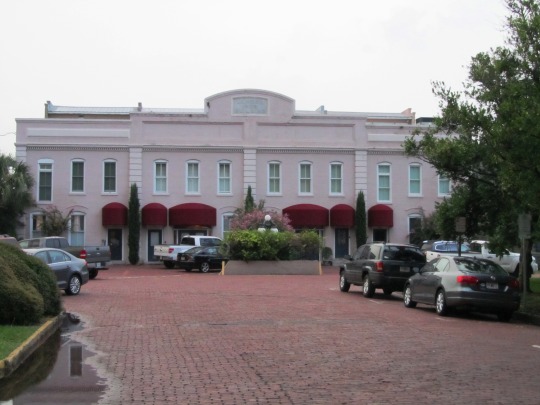


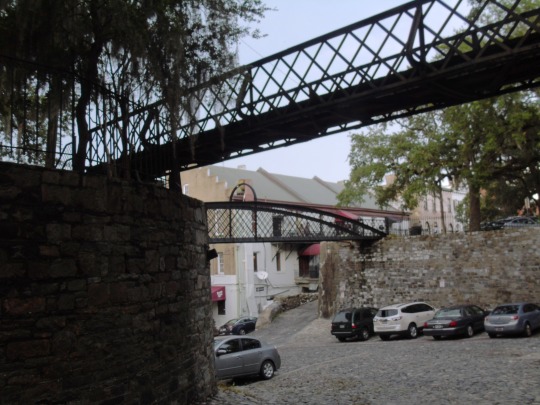


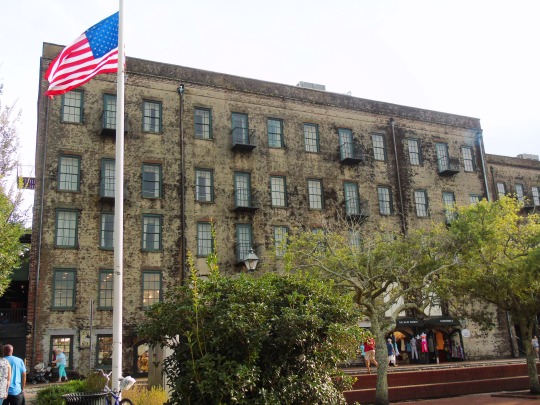



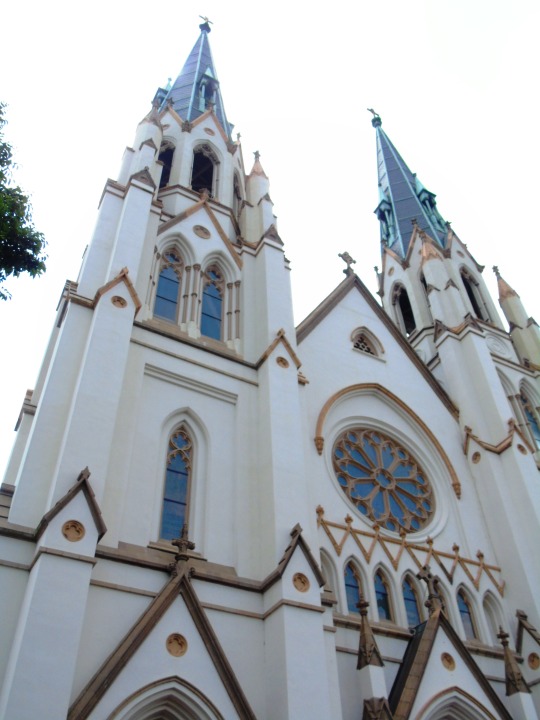
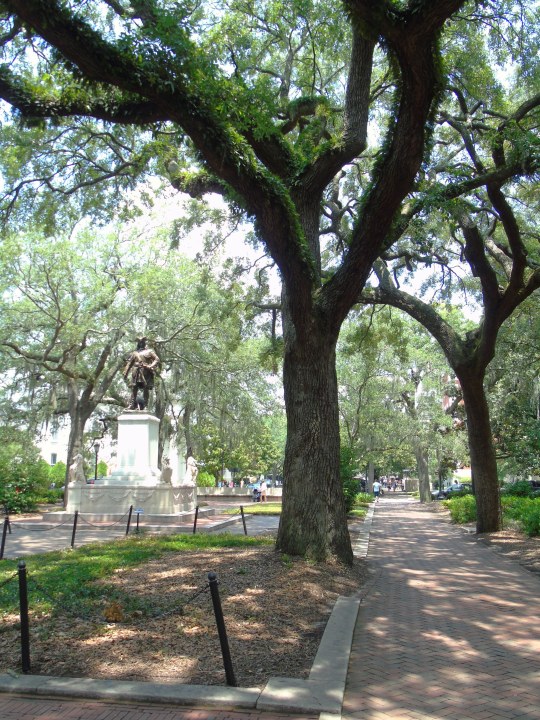
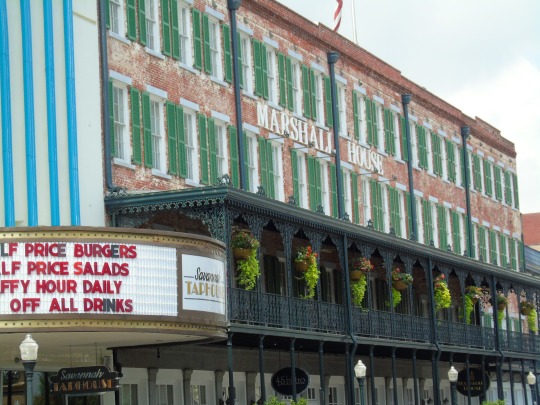



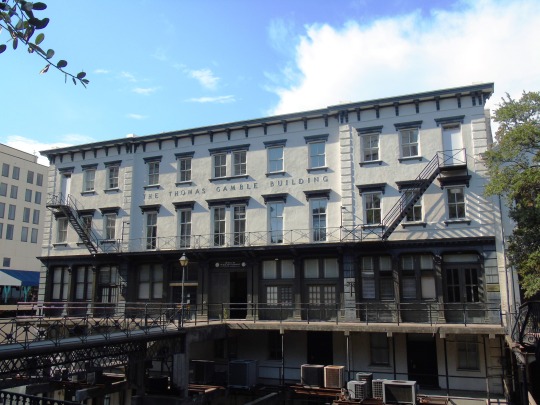

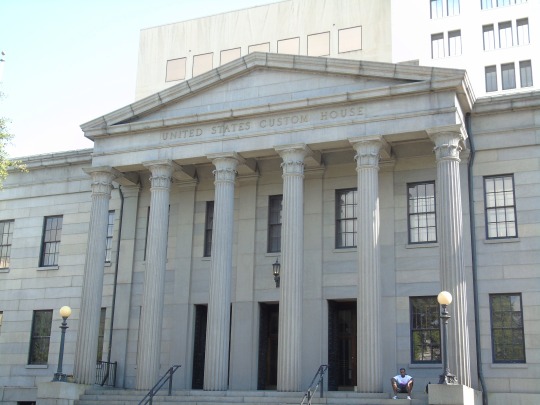
Englishman James Oglethorpe founded Savannah on February 12, 1733.
#Savannah#Savannah River#James Oglethorpe#founded#12 February 1733#USA#Georgia#summer 2016#2014#original photography#cityscape#travel#vacation#architecture#nature#flora#tourist attraction#landmark#Colonial Park Cemetery#Forsyth Park#Cathedral of St. John Baptist#City Hall#Chippewa Square#Savannah Cotton Exchange#2013#Granite Hall
3 notes
·
View notes
Text
February 12, 1733, James Oglethorpe arrived at present-day Savannah to establish the new colony of Georgia.
While there are legends and anecdotes about Georgia being a penal colony, Georgia was meant to be a haven for those facing the risks of debtors’ prisons in Great Britain. In order to give these people a fair chance, the Georgia Charter explicitly forbade certain influences that could be exploitative such as slavery, large landholdings, and attorneys. Georgia was meant to be a new beginning, a clean slate, and a promising opportunity.
Oglethorpe worked closely with Tomochichi, Chief of the Yamacraw who made their home in the area. Their partnership was vital in making the colony work in a way that was fair to both colonists and the Yamacraw.
The plan eventually fell apart and Georgia is much different than Oglethorpe’s original plan. But there are lessons to be learned and principles we should revisit to make Georgia better. There are ways to make our state a place where regular folks can make a life here.
That being said, Happy Birthday, Georgia! 290 years old and still looking pretty good!
#Georgia #GeorgiaDay #Savannah #Oglethorpe



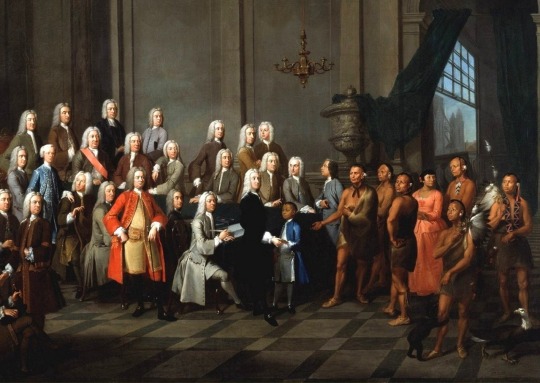
8 notes
·
View notes
Text
It's Georgia Day. On February 12, 1733, James Oglethorpe, along with a group of settlers, established the last of the 13 original British colonies, Georgia. The colony of Georgia was named after King George II. https://nationaltoday.com/georgia-day/
0 notes
Text
On this day in Wikipedia: Monday, 12th February
Welcome, vítejte, أهلا بك (ahlan bika), καλωσόρισμα (kalosórisma) 🤗
What does @Wikipedia say about 12th February through the years 🏛️📜🗓️?

12th February 2022 🗓️ : Death - Ivan Reitman
Ivan Reitman, Slovak-Canadian actor, director, and producer (b. 1946)
"Ivan Reitman ( ; October 27, 1946 – February 12, 2022) was a Czechoslovak-born Canadian filmmaker. He was best known for his comedy work, especially in the 1980s and 1990s. He was the owner of The Montecito Picture Company, founded in 1998. Films he directed include Meatballs (1979), Stripes..."

Image licensed under CC BY-SA 2.0? by GabboT
12th February 2019 🗓️ : Event - North Macedonia
The country known as the Republic of Macedonia renames itself the Republic of North Macedonia in accordance with the Prespa agreement, settling a long-standing naming dispute with Greece.
"North Macedonia ( MASS-ih-DOH-nee-ə), officially the Republic of North Macedonia, is a landlocked country in Southeast Europe. It shares land borders with Kosovo to the northwest, Serbia to the north, Bulgaria to the east, Greece to the south, and Albania to the west. It constitutes approximately..."

Image by User:SKopp, redrawn by User:Gabbe
12th February 2014 🗓️ : Death - John Pickstone
John Pickstone, English historian and author (b. 1944)
"John Victor Pickstone (29 May 1944 – 12 February 2014) was a British historian of science and the Wellcome Research Professor in the Centre for the History of science, Technology and Medicine, in the Faculty of Life Sciences of the University of Manchester...."

Image licensed under CC BY-SA 2.0? by Sage Ross
12th February 1974 🗓️ : Event - Aleksandr Solzhenitsyn
Aleksandr Solzhenitsyn, winner of the Nobel Prize in Literature in 1970, is exiled from the Soviet Union.
"Aleksandr Isayevich Solzhenitsyn (11 December 1918 – 3 August 2008) was a Russian writer and prominent Soviet dissident who helped to raise global awareness of political repression in the Soviet Union, especially the Gulag prison system. Solzhenitsyn was born into a family that defied the Soviet..."

Image licensed under CC0? by Bert Verhoeff for Anefo
12th February 1924 🗓️ : Event - George Gershwin
George Gershwin's composition Rhapsody in Blue premiered at Aeolian Hall in New York.
"George Gershwin (; born Jacob Gershwine; September 26, 1898 – July 11, 1937) was an American composer and pianist whose compositions spanned popular, jazz and classical genres. Among his best-known works are the orchestral compositions Rhapsody in Blue (1924) and An American in Paris (1928), the..."

Image by Carl Van Vechten
12th February 1824 🗓️ : Birth - Dayananda Saraswati
Dayananda Saraswati, Indian monk and philosopher, founded Arya Samaj (d. 1883)
"Dayanand Saraswati () (born Mool Shankar Tiwari; 12 February 1824 – 30 October 1883), was an Indian philosopher, social leader and founder of the Arya Samaj, a reform movement of Hinduism. His book Satyarth Prakash has remained one of the influential text on the philosophy of the Vedas and..."

Image by Srijut Krishnaravji
12th February 🗓️ : Holiday - Georgia Day (Georgia (U.S. state))
"Georgia Day is the holiday which the U.S. state of Georgia recognizes in honor of its colonial founding as the Province of Georgia. On February 12, 1733 [NS] James Oglethorpe landed the first settlers in the Anne, at what was to become Georgia's first city (and later the first state capital),..."
0 notes
Text
of words, as if spun
who out of words 1
in the Ending out of words 2
out of words :
and their hearts inclined the bramble 3
of the letters,
and sentences out of words
to this length [, that the argument for the disuse of these marks] 4
or put out of
[ words and thoughts were well calculated to ]
sight 5
out of words, dresses to your 6
interlining and rasing out of words 7 sometimes
out of tune, and still oftener out of words 8
spinning, out of words, the sort of piece-goods called law,
and that of the goodness that cloth would be of, if spun out of cobwebs 9
pouring out of words 10
most trifling
evidence which sophistry can squeeze out of words and phrases 11
who feed out of words 12
A bringing out of words 13 to be formed,
if the mere calling out of words
[ in one monotonous tone, in a blundering manner, and without regard to the sense, ]
be then 14
the same object
by the insertion of words, as
by the striking out of words 15
sources
1
ex L. I. B. of Art, of Oxford [John Lechmere, recusant], his The Relection of a conference touching the reall presence. Or A Bachelours censure of a Masters apologie for Doctour Featlie. (Doway (Douai, France), 1635) : 109
2
OCR misread of “finding”, ex Edward Phillips (1630-c1696 *), The new world of words : or a General English dictionary, Third edition (London, 1671) : preface
3
confused scan, somewhere in Chronicles (Book II), ex The Holy Bible, Containing the Old Testament and the New, with Notes (1776) : here
4
ex Samuel Horsley (1733-1806 *), On the Prosodies of the Greek and Latin Languages (1796) : 29
5
OCR cross-column misread, “Bank Restriction Bill” (December 18, 1803) in Parliamentary Debates, Vol. 1 (22 November to 29 March, 1803-1804), (London, 1812) : 1829-1830
6
OCR cross-column misread, ex “Proceedings against Dr. Gilbert Burnet [1634-1715 *], for High Treason” in T. B. Howell, comp., A Complete Collection of State Trials and Proceedings for High Treason and other Crimes and Misdemeanors, vol. 11 (of 21), 1680-1688 (London: 1816) : 1107
7
ex definition (2) of “interline” (“to correct by something interwritten between the lines”), in Samuel Johnson, A Dictionary Of The English Language; In Which The Words Are Deduced From Their Originals &c., &c., vol. 3 (of 5), “with numerous” corrections, additions &c by Rev. H. J. Todd (London, 1818) : here
8
ex discourse on the man of fashion, in anon., The Lairds of Fife, Vol. 1 (of 3), (Edinburgh, 1828) : 170
(see University of Glasgow, Extended Bibliography of Scottish Fiction in the novel collection)
9
ex Jeremy Bentham. Justice and Codification Petitions : Being Forms Proposed for Signature by all persons whose desire it is to see justice no longer sold, delayed, or denied... (London, 1829) : 136
10
ex definition of “effusion”, in Noah Webster, comp., A Dictionary of the English Language, Vol. 1 (of 2), (London, 1831) : here
11
ex “The Preacher, Sermon No. 23”, by Henry Fite, of New-York, in Evangelical Magazine and Gospel Advocate (Utica, New York; November 10, 1832) : 353
12
OCR search function run wild, for this volume, The Register of Debates : 23rd Congress, 1st Session, 2:12 (May 1, 1834) : 364 (366?)
13
from definition of “prolation”, in B(enjamin). H(umphrey). Smart (1787?-1872 *), his Walker remodelled, a new critical pronouncing dictionary of the English Language (London, 1836) : 492
also, “Prolate, a., Brought out beyond the exact figure, as a sphere drawn out at the poles.”
14
ex “Abstract of the Mass. School Returns, for 1838-9” in The Connecticut Common School Journal 2:10 (March 1, 1840) : 161
15
ex discussion of Pension Appropriation Bill, February 10, 1885, in Congressional Record, Senate Forty-eighth Congress, Second Session, Vol. 16 (1885) : 1485
—
all tagged tercet
14 notes
·
View notes
Photo
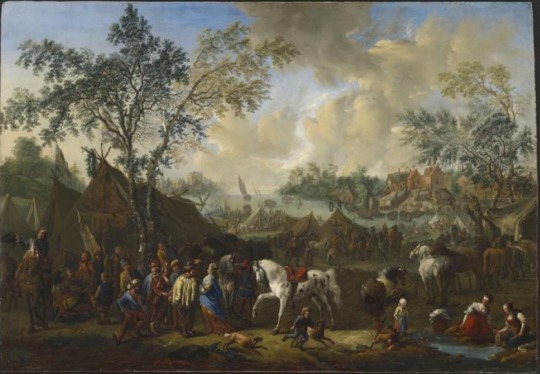
Jan Frans van Bredael (I) - Encampment near a River -
Jan Frans van Bredael or Jan Frans van Bredael the Elder (1 April 1686 – 19 February 1750) was a Flemish painter known for his landscapes, battle scenes and equestrian paintings. A prominent member of the third generation of the van Bredael family of painters of Antwerp, he was active mainly in his native Antwerp. He worked also in London and Paris where he enjoyed the patronage of an aristocratic clientele.
Jan Frans van Bredael was born into an artist family in Antwerp as the eldest son of Alexander van Bredael (1663–1720) and Cornelia Sporckmans. Jan Frans trained with his father. His father as well as his grandfather Peeter van Bredael and several cousins were also artists.
Jan Frans trained under his father. In 1706 Jan Frans van Bredael and his cousin Jozef entered into a contract with the Antwerp art dealer Jacob de Witte to produce for a number of years copies after the paintings of Philips Wouwerman and Jan Brueghel the Elder. Under the contract, Jan Frans was to receive for each copy he produced 10 guilders in the first year, 12 guilders in the second and 14 guilders in the third and fourth years plus a bonus of 2 shillings. At the end of the contract he would also get a new blue broadcloth coat. His brother Jozef was paid a marginally lower fee but was not bound like Jan Frans by an exclusivity obligation to work only for Jacob de Witte. Since Jan Frans and Jozef did not sign the copies they made, it is not possible to distinguish who was responsible for the individual copies that were produced under the contract. It is possible that the not so scrupulous art dealer de Witte even sold these copies as originals since the copies were such good imitations of the style of the original artists. Jan Frans finally ended up working for de Witte for a period of nine years.
Jan Frans van Bredael worked in England early in his career (probably before 1716). Little is known with certainty about his residence in England. He is deemed to have enjoyed the patronage of important clients, among whom James Radclyffe, 3rd Earl of Derwentwater and possibly even the King.
In the period from 1719 to 1725 he was active in Paris. He returned to Antwerp in 1725 where he joined the Antwerp Guild of Saint Luke in the same year. He became deacon of the Guild the next year and again in the years 1733, 1734 and 1735. Jan Frans van Bredael married Catharina de Rijck. The couple had two daughters and a son. The son who was also named Jan Frans (born in 1729) became a painter.
In his lifetime van Bredael enjoyed an excellent reputation. It is reported that when King Louis XV of France visited Antwerp visited his studio in 1746 he acquired four small works from the artist.
Jan Frans van Bredael died in Antwerp in 1750.
6 notes
·
View notes
Text
Conosciuto anche come Sala Pirandello porta il nome di uno dei più importanti teatri romani distrutto nel 1889 che era conosciuto anche come Teatro Apollo-Tordinona, Tordinona-Apollo o solamente Apollo.



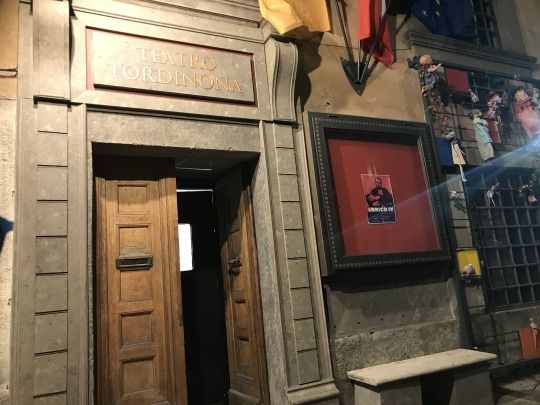
after the construction of the Carceri Nove in via Giulia, the building had been abandoned by the destined and entrusted in emphyteusis to a brotherhood of friars, who made it into an inn, which failed in 1663 due to the lack of security in the area... The hall, about 16x22 meters, was "U" shaped in the tradition of the Italian theater, made up of six tiers of boxes. and was accessible both from land and from the river. The inauguration took place in the spring of 1670 with a show by Tiberio Fiorilli, who was entrusted with the entire theater season. In 1675 the theater was closed for the Jubilee celebrations, and remained in disuse for sixteen years. Reopened in 1690 and completely renovated in the interior, with the construction of the horseshoe hall demolished in 1697 by order of Innocent XII, a pontiff opposed to theatrical art. Only the intervention of Pope Clement XII allowed the reconstruction of the building, at the entire expense of the Papal State: the new plan was almost circular, with a reduced number of boxes (four, compared to the previous six) and the inauguration took place on 12 January 1733. The programming, which had undergone a qualitative decline over time, did not affect the frequency of spectators, who attended the Tordinona until the closure, for restorations, of 1762. The reopening took place in 1764, and in 1768 new works modified the overall appearance of the room. On January 29, 1781, however, a fire burned down the entire structure, which was built entirely of wood. the new theater, renamed the Apollo Theater, was ready in 1795, but changing owner several times, by the prince Francesco Publicola Santacroce to Prince Giovanni Torlonia, who renovated the building again in 1820. The theater rehabilitated its name, becoming a first-class theater: in 1870 the royal box was added to it, in honor of the king of Italy Vittorio Emanuele II of Savoy. Despite the success, the works for the construction of the banks of the Tiber, whose continuous floods undermined the safety of the city and its inhabitants, necessitated the demolition, in 1888, of the entire theater, which overlooked the river. Only in 1925 was a commemorative stele built, with an epigraph by Fausto Salvatori, where the theater once stood:
"IL TEATRO APOLLO
le pietre della antica torre orsina
a fasti e glorie d'arte musicale
apri' le dorate scene
e dove foscheggio' Torre di Nona
libera si diffuse la pura melodia italica
del Trovatore il 19 gennaio del 1853
di Un Ballo in Mascheria il 17 febbraio del 1859.
qui dove sul teatro demolito
passa la luova strada romana
il genio di Giuseppe Verdi
affida l'eterna melodia canora
all'aria, al sole, al cuore umano
THE APOLLO THEATER
the stones of the ancient Orsina tower
to the pomp and splendor of musical art
opened the golden scenes
and where the Torre di Nona faded
the pure Italic melody spread freely
del Trovatore on January 19, 1853
by Un Ballo in Mascheria on February 17, 1859.
here where on the demolished theater
the new Roman road passes
the genius of Giuseppe Verdi
entrusts the eternal singing melody
to the air, to the sun, to the human heart"
After the destruction of the building, l'Istituto Autonomo Case Popolari took charge of the reconstruction of the same in the immediate vicinity of the old location of the Tordinona theater, promising to perpetuate its name and fame: in the early thirties of the twentieth century the Tordinona theater reopened the flying in via degli Acquasparta, in the back of the building in Calza Bini intended for the headquarters of l'Istituto Autonomo Case Popolari. The attendance of the theater by the Sicilian playwright Luigi Pirandello, however, earned him the change of name from Teatro Tordinona to Teatro Pirandello from the end of the 1940s until 1968, when the old name was restored.
0 notes
Text
Georgia Day
also known as Oglethorpe Day, February 12 commemorates the day in 1733 when James Edward Oglethorpe and 120 other Englishmen landed in Savannah, Georgia, to establish a new colony. In 1965, the anniversary of the state's founding was officially proclaimed Georgia Day. On February 12, there is a procession through the historic town of Savannah and a luncheon. since 1966, there has been a reenactment of Oglethorpe's landing, with costumed residents playing the roles of Georgia's first European settlers and of the American Indians who greeted them upon their arrival.
0 notes
Text
John Dalrymple, 2nd Earl of Stair

Field Marshal John Dalrymple, 2nd Earl of Stair, was a Scottish soldier and diplomat. He served in the Nine Years' War and the War of the Spanish Succession and, after a period as British Ambassador in Paris, became a military commander at the battle of Dettingen.
Born the son of John Dalrymple, 2nd Viscount Stair (and later 1st Earl of Stair) and Elizabeth Dalrymple (née Dundas), Dalrymple accidentally killed his brother in a shooting accident in April 1682 and thereafter spent most of his early life in the Netherlands where he studied at Leiden University. He joined up as a volunteer for the Nine Years' War with the Earl of Angus's Regiment and fought at the Battle of Steenkerque in August 1692. At Steenkerque he rallied his regiment several times when the ranks had been broken by cannon fire. In 1695 he became Master of Stair when his father succeeded to the Viscountcy of Stair.
He was commissioned as a lieutenant colonel in the 3rd Foot Guards on 12 May 1702 and fought with the Duke of Marlborough during the War of the Spanish Succession at the Battle of Peer in August 1702 and the Battle of Venlo in September 1702. At Venlo he also saved the life of the Prince of Hesse-Kassel.
He became Viscount Dalrymple in 1703 when his father was created 1st Earl of Stair. In January 1706 he was appointed colonel of the Earl of Angus's Regiment. He commanded a brigade at the Battle of Ramillies in May 1706 and, having been promoted to brigadier general on 1 June 1706, became colonel of the (Scots) Grey Dragoons on 24 August 1706. He became 2nd Earl of Stair in January 1707 when his father died and later that year he was elected as one of sixteen Scottish representative peers in the newly formed Parliament of Great Britain.
He commanded a brigade at the Battle of Oudenarde in July 1708, the Siege of Lille in Autumn 1708 and then, having been promoted to major general on 1 January 1709, at the Battle of Malplaquet in September 1709. In Winter 1709 the Duke of Marlborough sent him on a diplomatic mission to Augustus II of Poland. He returned in time to take part in the Siege of Douai in April 1710. Promoted to lieutenant general on 1 June 1710, he fought at the Siege of Bouchain in August 1711. He was also appointed a Knight of the Thistle that year.
He was sent to Flanders to join the military campaign there in April 1712 and became colonel of the Black (Inniskilling) Dragoons on 9 April 1714.
When King George I ascended to the throne in August 1714, Dalrymple was sent as an envoy to the Court of France at Versailles. He was temporarily recalled on 20 November 1714 to take up the appointment of Commander-in-Chief of the Forces in Scotland.
According to the Duc de Saint-Simon, Stair quickly established friendly relations with Philippe II, Duke of Orléans, Regent to the young King Louis XV, paving the way for the Triple Alliance. During his time in Paris, Stair's spies effectively thwarted various "intrigues" by the Jacobites. Stair retired from his position as ambassador in Paris in June 1720.
In 1729, he became Vice Admiral of Scotland, but lost the position on 5 May 1733, mainly because of his opposition to the Excise Bill of 1733 promoted by Prime Minister Robert Walpole. He was promoted to full general, on the basis of seniority, on 27 October 1735 and also found time to lay out the gardens at Castle Kennedy in the 1730s.
On 20 March 1742, after Walpole had fallen from office, Dalrymple was promoted to field marshal. On 17 April 1742 he was made Governor of Minorca and on 20 April 1742 took command of the "Pragmatic Army" sent to act with Hanoverian and Austrian forces in support of the Pragmatic Sanction to appoint Maria Theresa to the position of Empress of Austria. He was appointed Commander-in-Chief of the Forces in South Britain on 28 February 1743 and colonel of the Black Dragoons again on 30 April 1743 and led the allies to victory at the Battle of Dettingen in June 1743. He retired from command of the army in Flanders at his own request on account of his advancing years in September 1743 and retired as Commander-in-Chief of the Forces to make way for General Wade in 1745.
On 4 June 1745 he became colonel of the Grey Dragoons and on 14 June 1746 he became General of the Marine Forces. His favourite residence was Newliston near Kirkliston in Linlithgowshire, where he laid out gardens in the French style.
He died on 9 May 1747 at Queensberry House in Edinburgh and was buried in the family vault at Kirkliston.
#john dalrymple#history#18th century#military history#british army#scotland#scottish#Scottish history#17th century
14 notes
·
View notes
Note
Sorry I mean Ahmed III harem and his children.
Hello! This was very fun to do, considering that Ahmed III had the largest family among all 36 Ottoman sultans.
Consorts:
Emetullah Kadın: Senior Imperial consort of Ahmed III, she was the mother of his first child: Fatma Sultan. She was the most beloved consort of Ahmed III, who dedicated a mosque, a school and a fountain to her. Her foundation deeds show that she was a very charitable woman. She was sent to the Old Palace when Ahmed III was deposed, her date of death is not certain, probably 1739/1740.
Mihrişah Kadın: Second Imperial consort of Ahmed III, she was the mother of Mustafa III, but she did not become valide sultan as she died before his son’s accession. She gave birth to her first son, Şehzade Süleyman, in 1710, to the future Mustafa III in 1717, to Şehzade Bayezid in 1718 and to Şehzade Seyfeddin in 1728. Seyfeddin and Süleyman died young, Bayezid died after spending 40 years in the kafes. She was sent to the Old Palace after Ahmed III’s deposition and died there two years later. In his mother’s honour, Mustafa III would build the Ayazma Mosque in Üsküdar.
Rabia Şermi Kadın: probably Third Imperial Consort. She was mother of Abdülhamid I, who was born on 20 March 1725. When the prince was 3 years old, a fountain was built in Üsküdar in her honour. When Ahmed III was deposed, Prince Abdülhamid was put in the kafes, where he would stay for 44 years; Rabia Şermi was sent to the Old Palace. She probably died in 1732, like Mihrişah Kadın and Ahned III’s daughter Fatma Sultan.
Ayşe Behri Kadın: it is said she was the harem’s second treasurer before becoming one of Ahmed III’s consorts.
Hatem Kadın: she was the mother of twins Saliha Sultan and Şehzade Selim. She died in 1772 and was buried in Eyüp.
Musli Kadın: she is also called Muslıhe, Muslu, Musalli or Emine. She was the mother of Ayşe Sultan “the younger” and Zübeyde Sultan. She died in 1749/1750 and was buried in the New Mosque, beside her daughter Zübeyde.
Rukiye Kadın: she’s not mentioned in Sicill-i Osmani or in The Structure of the Ottoman Dynasty. Uluçay identified her with a document dated 1704, which refers to her as “The Second Consort, the Righteous Rukiye”. She was the mother of Hatice Sultan, and built the Rukiye Kadın Fountain near the New Mosque. Her child died in 1738 and was buried in the New Mosque. She died later and was buried beside her.
Fatıma Hümaşah Kadın: she is mentioned in various palace documents. She died in 1732 and was buried in the New Mosque.
Gülşen Kadın: also called Gülnüş. She was among the consorts to be taken to the Old Palace after the deposition of Ahmed III. She certainly died after 1730.
Hürrem Kadın: she is mentioned among those whose jewels were confiscated after Ahmed III’s deposition.
Meyli Kadın: she is mentioned in the same document that mentioned Hürrem Kadın.
Hatice Kadın: she died in 1722 and was buried in the New Mosque.
Nazife Kadın: mentioned in the document dated 1730 that listed the consorts whose jewels were confiscated and who were sent to the Old Palace.
Nejat Kadın: mentioned in the 1730 document.
Sadık Kadın: mentioned in the 1730 document.
Hüsnüşah Kadın: she died in 1733 and was buried in the New Mosque.
Şahin Kadın: she died in 1732 and was buried in the New Mosque.
Ümmügülsüm Kadın: she died in 1768 and was buried in the New Mosque.
Zeyneb Kadın: she died in 1757 and was buried in the New Mosque.
Hanife Kadın: mother of Esma Sultan “the elder”. She died in 1750 and was buried in the New Mosque.
Şayeste Hanım: Ikbal of Ahmed III, she died in 1722 and was buried in the New Mosque.
Children:
Fatma Sultan (22.9.1704 - April/May 1733): daughter of Emetullah Kadın and eldest child of Ahmed III. She married Silâhdar Ali Paşa at 5 years old, on 11 May 1709. Ali Paşa became Grand Vizier in 1713 but died in 1716 during the Battle of Peterwardein. Thus Fatma became a widow at the age of 12. She subsequently married the 50 year-old Nevşehirli Ibrahim Paşa the following year, but the marriage could not be consummated right away because of the princess’ young age. They had a son together, Sultanzade Mehmed Bey, who died in the winter of 1737. With her husband, she was so influential during the Tulip Era that she was called “the true power”. Ibrahim Paşa was killed in the Patrona Halil uprising, Ahmed III was dethroned Fatma Sultan lost her wealth and wa sent to the Old Palace. Mahmud I let her live in Çırağan Palace but she died just three years later, at 29 years old.
Şehzade Mehmed (24.11.1705 - 30.7.1706)
Şehzade Isa (23.2.1706 - 14.5.1706)
Şehzade Ali (18.6.1706 - 12.9.1706)
Şehzade Selim (29.8.1706 - 15.4.1708)
Hatice Sultan (21.1.1707 - 22.1.1708): she is buried in the mausoleum of Turhan Hatice Sultan.
Rukiye Sultan (3.5.1707 - 29.8.1707): she is buried in the mausoleum of Turhan Hatice Sultan.
Şehzade Murad (17.11.1707 - 1707)
Şehzade Murad (25.1.1708 - 1.4.1708)
Ümmügülsüm Sultan (11.2.1708 - 1732): twin of Zeynep Sultan. She was engaged at the age of two to Abdurrahman Paşa but he died before the marriage could take place. She married Nevşehirli Ali Paşa, nephew of Nevşehirli Ibrahim Paşa in 1724 and had two sons together: Sultanzade Hafiz Mehmed Bey and Sultanzade Haci Mustafa Bey. Their marriage was happy but Ali Paşa was killed in the Patrona Halil uprising in 1730, making her a widow at 22 years old. She died in 1732, maybe of an epidemic, and was buried in the New Mosque.
Zeynep Sultan (11.2.1708 - 5.10.1708): twin of Ümmügülsüm Sultan. She was buried in the mausoleum of Turhan Hatice Sultan.
Şehzade Abdülmecid (12.12.1709 - 18.3.1710)
Şehzade Abdülmelek (12.12.1709 - 7.3.1711)
Zeynep Sultan (5.1.1710 - 7.1710): she is buried next to her older sister Zeynep Sultan.
Hatice Sultan (8.2.1710 - ??): she died young and was buried in the mausoleum of Turhan Hatice Sultan.
Şehzade Süleyman (25.8.1710 - 11.10.1732)
Hatice Sultan (27.9.1710 - 1738): daughter of Rukiye Kadın. She was engaged to Hafiz Ahmed Paşa in 1724 and they were married on 27 February of the same year. According to Anderson, she later married one Halil Ağa, with whom she had a son: Sultanzade Süleyman İzzi Efendi. Three fountains in Istanbul bear her name; among these is the Hatice Sultan Fountain in Üsküdar which her father Ahmed III had built in her honour. She died in 1738.
Emine Sultan (1711 - 1720): she was buried in the New Mosque. Her birth certificate was found in the Ottoman Archives, but the name of her mother is not mentioned.
Atike Sultan (2.1712 - 1737): the name of her mother is unknown. She was engaged to Nevşehirli İbrahim Paşa’s son by his first wife Nevşehirli Mehmed Bey, who was later elevated to Paşa, in 1724 and they got married on 13 March of the same year. Mehmed Paşa escaped the Patrona Halil uprising unharmed and was appointed firstly governor of Thessaloniki in 1732 and later governor of Hüdavendigar. He fell sick in 1735 and retired, while Atike Sultan died young in 1737. She was buried in the New Mosque.
Rukiye Sultan (7.3.1712 - 10.1715): she is buried in the mausoleum of Turhan Hatice Sultan.
Şehzade Mehmed (8.10.1712 - 15.7.1713)
Şehzade Selim (21.3.1715 - 2.1718)
Saliha Sultan (21.3.1715 - 11.10.1778): daughter of Hatem Kadın, she had a twin brother, Şehzade Selim, who died young. In 1728, she married Sarı Mustafa Paşa, son of Deli Hüseyin Paşa. With him, she had Sultanzade Ahmed, Fatma Hanım Sultan and Hatice Hanım Sultan. Mustafa Paşa died in 1731, and in 1740, Saliha Sultan married Abdi Paşazade Ali Paşa but he died in 1744. She stayed a widow for 14 years, until Mustafa III married her to Grand Vizier Koca Ragıb Mehmed Paşa. The Grand Vizier died in 1763 and in 1764 she married her last husband, Captain of the Janissaries Mehmed Paşa. She became a widow for the last time in 1770 and did not marry again. Her children included Ayşe Hanım Sultan (who died young) and Emine Hanım Sultan as well, with no information about the fathers.
Ayşe Sultan “the younger” (11.10.1715 - 9.7.1775): daughter of Musli Kadın and Zübeyde Sultan elder sister. She was called the younger to distinguish her from Mustafa II’s daughter Ayşe Sultan, called “the elder”. She married İstanbullu Mehmed Paşa in 1728, but her husband died in 1738. In 1740 she married Grand Vizier Topal Osman Paşa’s son Gül Ratıb Ahmed Paşa, who died in 1748. In 1758, her brother Mustafa III married her to Silâhdar Cihangiri Mehmed Paşa. Ayşe Sultan died in 1775 and was buried in the New Mosque, her daughter Rukiye Hanımsultan lying beside her.
Şehzade Mehmed (2.1.1717 - 2.1.1756)
Mustafa III (28.1.1717 - 21.1.1774)
Şehzade Bayezid (4.10.1718 - 24.1.1771)
Reyhane Sultan (before 1719 - 1720): she si called Rihane by Alderson and Reyhan by Uluçay. She was buried in the New Mosque.
Rabia Sultan (19.11.1719 - 1724 ?): she was alive at least until 1724 because she was the recipient of a gift from Damad Ali Paşa.
Şehzade Abdullah (18.12.1719 - 19.12.1719)
Emetullah Sultan (1719 ? - 1724 ?): she is called Ümmetullah by Alderson. She was buried in the New Mosque.
Zeynep Sultan (1720 ? - 25.3.1774): she is called Zeyneb Asıma in some sources. She married Sinek Küçük Mustafa Paşa in December 1728. She was assigned the Kıbleli Palace, where she lived with her husband till his death in 1764. Later she married Grand Vizier Melek Mehmed Paşa. She built the Ruh-i Sultaniye Mosque in 1769, which is today called the Zeynep Sultan Mosque. She died on 25 March 1774 and was buried in the garden of her mosque.
Şehzade Ibrahim (12.9.1720 - 16.3.1721)
Şehzade Nu'man (22.2.1723 - 29.12.1764)
Emetullah Sultan (17.9.1723 - 28.1.1724): buried in the New Mosque.
Emine Sultan (before 1724 - 1732 ?): she was given gifts at Ümmügülsüm Sultan’s wedding in 1724. She was buried in the New Mosque.
Ümmüseleme Sultan (12.10.1724 - 5.12.1732): buried next to her sisters in the New Mosque.
Naile Sultan (15.2.1725 - 10.1727): buried in the New Mosque.
Abdülhamid I (20.3.1725 - 7.4.1789)
Esma Sultan “the elder” (14.3.1726 - 13.8.1788): her mother is said to have been Hanife Kadın, and not Zeynep, as it is stated in Sicill-i Osmani. She was called “the elder” so as not to confuse her with her niece, Esma Sultan “the younger”, and daughter of Abdülhamid I. Her name was chosen by her father who opened the Quran and read the first word of the page. She was 4 years old when Ahmed III was deposed. Her cousin Mahmud I chose Yakub Paşa as her first husband, and the two got married in February 1743, but the Paşa died the following year. In 1744 she married Adana governor Yusuf Paşa but was widowed soon again. Finally, on 24 June 1758, she married her last husband, Muhsinzade Mehmed Paşa. He was Grand Vizier twice during their marriage and, together, they were highly influential during the reign of Mustafa III. They resided in Kadırga Palace, the mansion Sokollu Mehmed Paşa had built during his grand vizierate; for this reason, Esma was considered a new Ismihan Sultan, Sokollu Mehmed Paşa’s wife. Muhsinzade Mehmed Paşa died in July 1774, but his wife survived him of 14 years. Esma Sultan died on 13 August 1788 and was buried next to her last husband in the mausoleum inside the Eyüp Sultan Mosque. She was considered by many a very devout woman, frugal but very wealthy.
Sabiha Sultan (19.12.1726 - 27.12.1726): she lived only for nine days. She was buried in the New Mosque.
Rebia Sultan (28.10.1727 - 4.4.1728): she is sometimes called Rabia. She was buried in the New Mosque.
Şehzade Seyfeddin (3.2.1728 - 1732)
Zübeyde Sultan (28.3.1728 - 4.6.1756): daughter of Musli Kadın, she was two when her father was deposed and so she grew up in the Old Palace. On 6 January 1748 she married Karaalizade Süleyman Paşa, governor of Anatolia, but her husband died only six months later. On 6 January 1749 she married Numan Paşa, who was appointed governor of Thessaloniki and Kavala. The princess lived in Edirne, in the property that her father Ahmed III had bestowed upon her, while her husband travelled around the empire between his provinces and the divan. Zübeyde Sultan fell sick and died at only 28 years old, on 4 June 1756. She was buried in the Yeni Mosque.
Şehzade Mahmud (?? - 22.12.1756)
Şehzade Hasan (?? - ??)
Ayşe Sultan (?? - 1706): she died 10 years before the birth of Ayşe Sultan “the younger”, and she is buried in the mausoleum of Turhan Hatice Sultan.
Ferdane Sultan (?? - 1718): she died young
Ümmüseleme Sultan (?? - 1719): she is called Ümmüselma by Alderson. She is buried in the New Mosque.
Rukiye Sultan (?? - 1720): she was buried in the New Mosque.
Beyhan Sultan (?? - 1720): she was buried in the New Mosque.
Nazife Sultan (?? - 1723): according to Alderson, she lived between 1725 and 1764 but it’s impossible for Uluçay because she never married and an Ottoman princess usually didn’t live for 40 years without contracting at least one marriage. For Sakaoğlu, she could have lived in the Old Palace because of mental or physical problems.
Ümmügülsüm Sultan (?? - 1729): she was buried in the New Mosque.
Ümmühabibe Sultan (?? - 1730): she was buried in the New Mosque.
Akile Sultan (?? - 1737 ?): she was buried in the New Mosque.
Ümmügülsüm Sultan (?? - 1742): she was buried in the New Mosque.
#anon#ask post#ask: ottoman history#*consortsandchildren#ahmed iii#emetullah kadin#mihrisah kadin#rabia sermi kadin#ayse behri kadin#hatem kadin#musli kadin#rukiye kadin#fatima humasah kadin#gulsen kadin#hurrem kadin#meyli kadin#hatice kadin#nazife kadin#nejat kadin#sadik kadin#husnusah kadin#sahin kadin#ummugulsum kadin#zeyneb kadin#hanife kadin#sayeste hanim#fatma sultan daughter of ahmed iii#ummugulsum sultan daughter of ahmed iii#hatice sultan daughter of ahmed iii#atike sultan daughter of ahmed iii
30 notes
·
View notes
Text

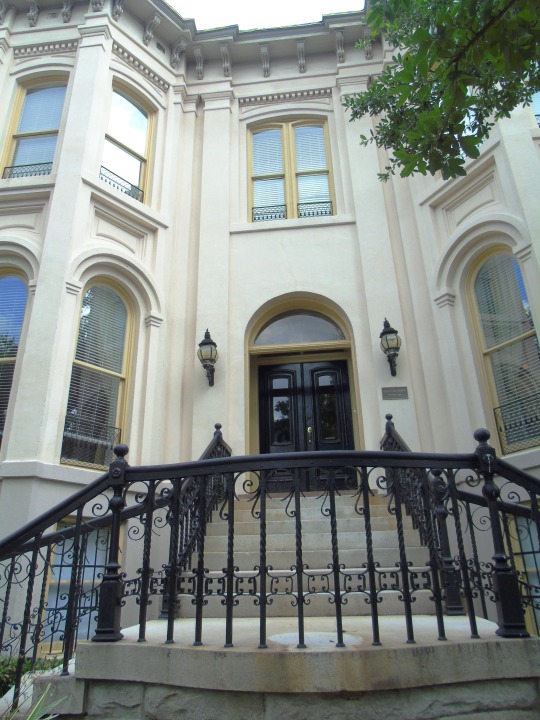



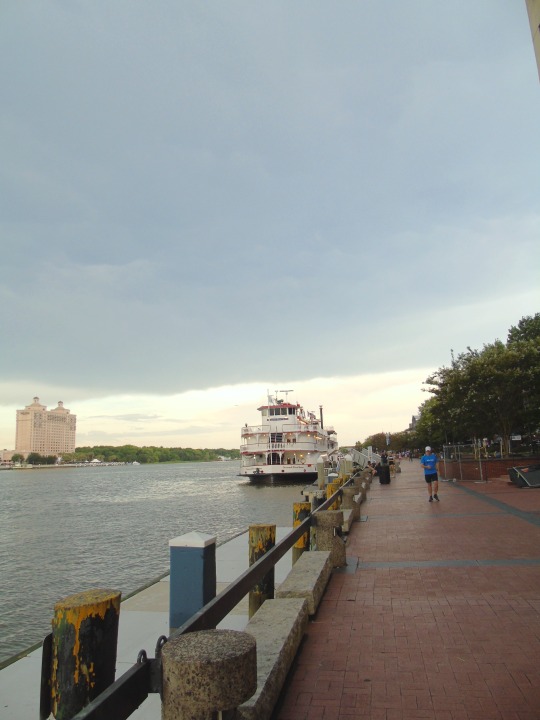


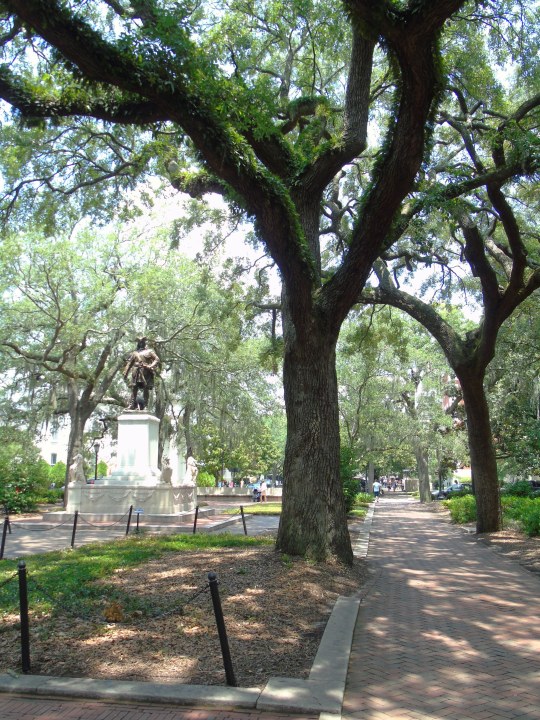
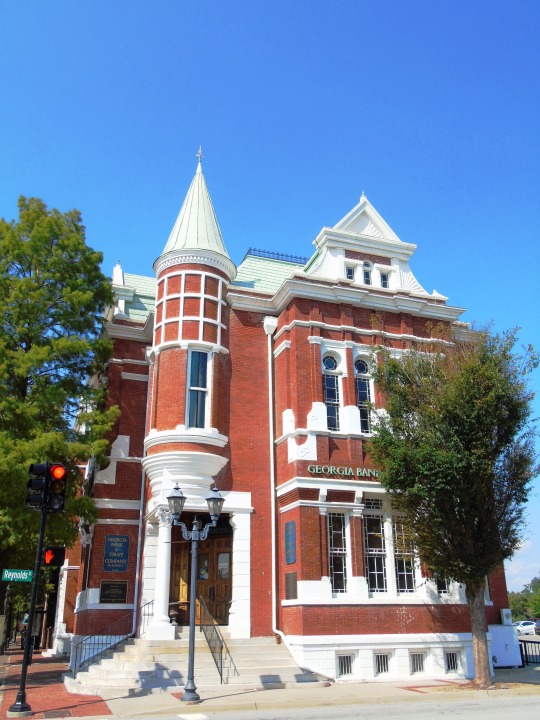





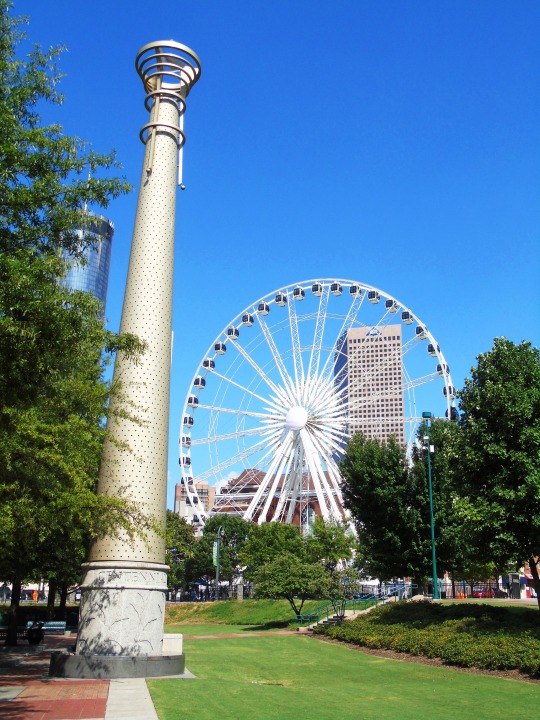



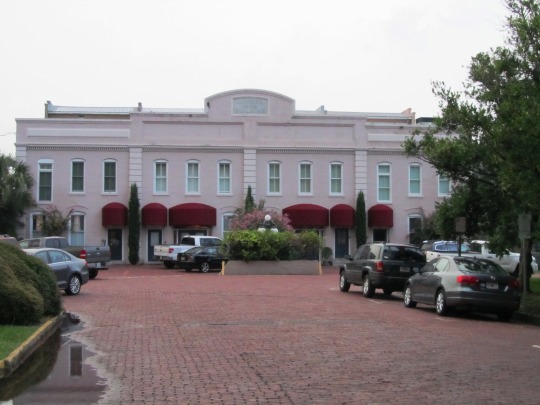


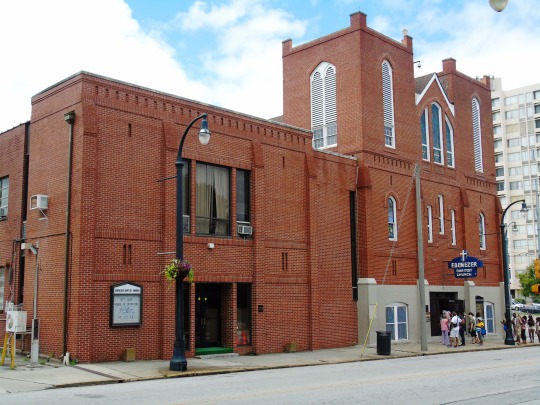

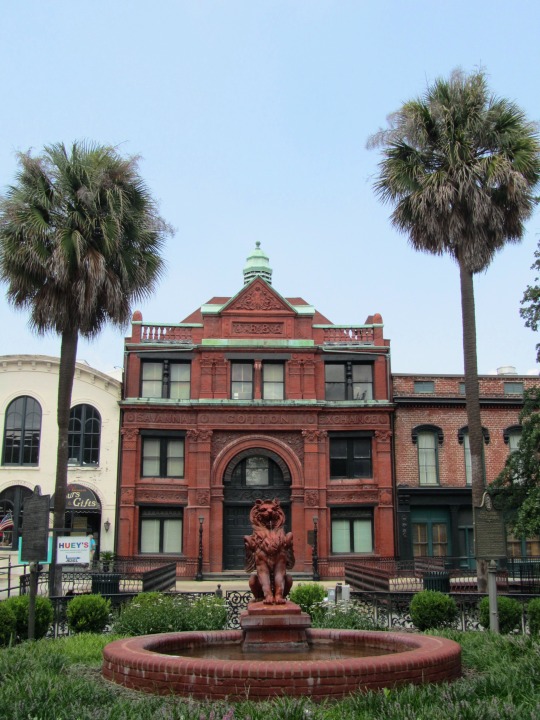





Englishman James Oglethorpe founded Georgia, the 13th colony of the Thirteen Colonies, and its first city at Savannah (known as Georgia Day) on February 12, 1733.
#Granite Hall#James Oglethorpe#founded#Georgia#Georgia Day#travel#12 February 1733#anniversary#US history#Savannah#summer 2016#USA#original photography#tourist attraction#landmark#cityscape#architecture#Atlanta#Centennial Olympic Park#Calhoun City Park#Augusta#vacation#Historic Ebenezer Baptist Church#Martin Luther King Jr. National Historic Site#Augusta Cotton Exchange#Martin Luther King Jr. Center for Nonviolent Social Change#city hall#Calhoun
0 notes
Text
The Rivera Family and their Legend
Don Juan de Rivera was a self-made man. He was an impoverished descendant of the Lakans. He started out as a loyal hired hand at Hacienda Santa Clara owned by the Thenorio sisters. He became the 'encargado' (person in charge) of the estate.
On the night of a storm, he rode out on his horse to get the only doctor available from a nearby town to treat a very ill Doña Maria Silvana Thenorio. To save time, he took a shortcut but his horse was struck and killed by lightning. He was thrown to the ground and lost consciousness. Miraculously, Doña Maria recovered and ordered a search party. After two days Juan was presumed dead, mourned as an adopted son by the Thenorios, but on the third day, he reappeared at the Hacienda. Considering this, and her recovery, a miracle, Doña Maria and her sisters made Juan their legal heir.
Don Juan de Rivera married his cousin, Doña Josepha de Rivera y Thenorio. Their eldest son, Don Nicolas Bonifacio, married Doña Paula Sarmiento de Silva who contributed her Spanish-Portuguese blood to the clan. The son of Don Nicolas and Doña Paula, Don Jacinto (1733-1792) married Doña Francisca Evangelista, daughter of Don Marcos Evangelista de Samonte and Doña Francisca Dalisay on February 23, 1754.
Don Jacinto's last testament, notarized on May 13, 1792, 5 days before his death, is the oldest surviving document in possession of his descendants and gives credence to the Rivera Family legend because it specifically refers to the last wills of Doña Maria Silvana and Doña Ines (Thenorio) in which paternal lands are bequeathed to Juan de Rivera.
Source: (Santiago, When a Town had to move, pgs 12-13).
Santiago, Luciano P.R. “WHEN A TOWN HAS TO MOVE: HOW PILA (LAGUNA) TRANSFERRED TO ITS PRESENT SITE (1794-1811).” Philippine Quarterly of Culture and Society, vol. 11, no. 2/3, 1983, pp. 93–106. JSTOR, jstor.org/stable/29791789.
Don Juan de Rivera was buried in Pila’s old location at Pagalangan (present-day Victoria, Laguna). His bones were probably interred at the old Pila Church in Pagalangan.
-From Cora Relova of the Pila Historical Society Foundation.

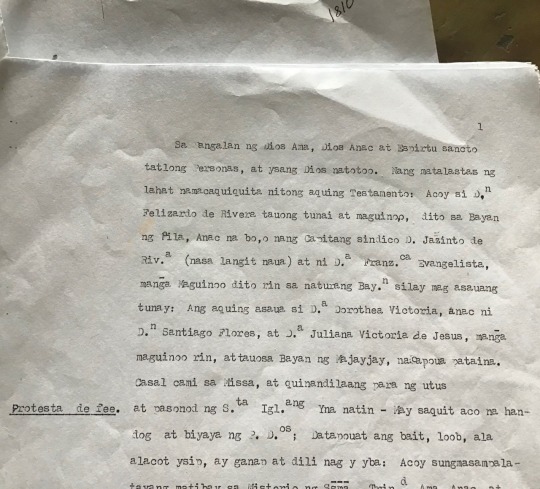
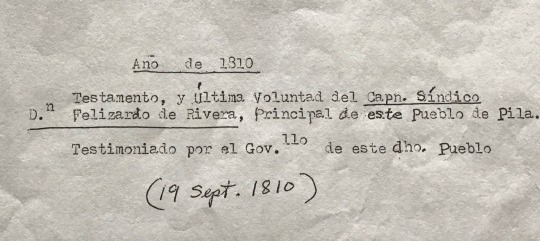
Last Will and Testament of Don Felizardo de Rivera, Founder of the present town of Pila, Laguna, and a Maginoo (Maguinoo) from the direct line of the datus of Pila.
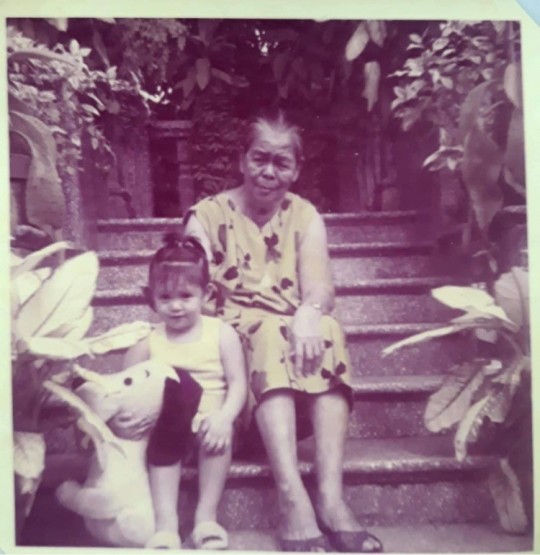
Corazon "Lola Ason" Rivera (del Mundo) with her great-granddaughter Lia Price, daughter of Cora Relova and granddaughter of Loreto "Loring" del Mundo Relova and Judge Ramiro ("Raming") Relova.

Corazon Rivera with her grandchildren.

Corazon Rivera at the balcony of her house in Pila.

Corazon Rivera house

Corazon Rivera's husband, Pedro del Mundo, Governor of Marinduque. Photo from Cora Relova of the Pila Historical Society Foundation.

Loreto del Mundo Relova was the last of the Rivera Clan of her generation. (from Cora Relova of the Pila Historical Society Foundation).


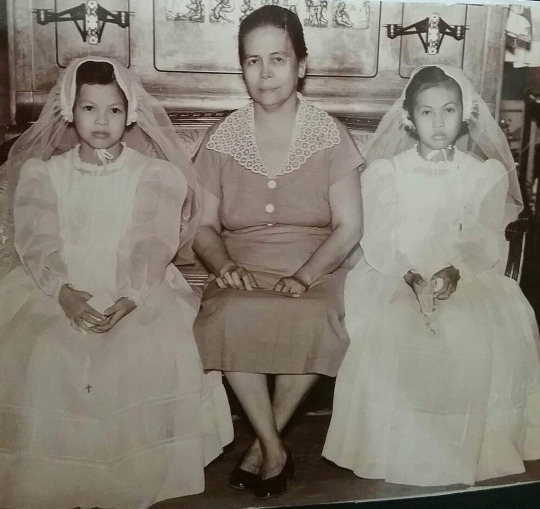
Corazon Rivera with granddaughters Cora and Jovita.
#pilalaguna#pila laguna#pila laguna history#philippine history#pila laguna museum#pila laguna heritage houses#pila laguna ancestral houses
0 notes
Text
Baron von Steuben Timeline
(Prussian military service)
From “The Drillmaster of Valley Forge: The Baron de Steuben and the Making of the American Army” ~ by Paul Lockhart
Born September 17, 1730 to a typical Prussian military family of the Junker class. His grandfather was a reformed preacher and grandmother a countess. Not a wealthy family despite noble claim.
1731, before Steuben 1-yr old, the King sent his father to Russia with a small group of officers to help tsarina Anna rebuild her army. The family accompanied the Russian army on a campaign against the Turks- his father earned a citation for bravery in the War of the Polish Succession 1733-1738
During time in Russia, Steuben lost both grandparents, moved from Cronstadt to St Petersburg to the Livonian port of Riga, lived in harsh climates, and lost five siblings.
1739 Father recalled to Prussia, a year later, Frederick the Great succeeded to the throne after his father’s death.
1740-1742, the First Silesian War opened the war of Austrian Succession (1740-48). Steuben’s father was awarded the Pour le merite or “Blue Max” for his role in the Siege of Neisse in 1741 and promoted to the rank of major at age 43- pretty young
Steuben studied with Jesuit priests during this time- very little schooling in the basics.
1744 Frederick the Great renewed the struggle with Maria Theresa and barged through Saxony into Habsburg Bohemia- starting the Second Silesian War.
Steuben came with his father to shadow his military career- watched him work as an engineer. But, such a thing required high education and could only allow someone to rise so far in a ‘technical’ field such as engineering and artillery- the real glory was in the infantry.
1746 Steuben 16 yrs old when he joins the Infantry Regiment von Lestwitz Regiment 31, in the Breslau garrison. He had to serve in the ranks before he could earn a commission- serve as an officer cadet. Eventually gained commission as an ensign.
Steuben sees Fredrick the Great leading a daily drill, wearing his plain black hat and unadorned regimental coat. Officers could not shirk the duty of training soldiers under their command. High-ranking officers would conduct drills themselves, even at the battalion level. The Prussian army came the closest to teaching officers leadership of any army of the era.
Steuben spends his free time as a junior teaching himself French and arithmetic, the language of the Prussian king and his court. Though his own french always remained workmanlike and inelegant. He spends his time reading and going to plays rather than joining in comical misadventures with prostitutes and tavern keepers. His favorite book was Don Quixote.
1754 Steuben’s company was detailed to dig trenches through an actively used cemetary outside the city walls of Breslau- oppressive heat and disease.
The Seven Years’ War (1756-63) Maria Theresa of Austria, fearful that Frederick the Great had become a loose cannon whose existence threatened the delicate balance of power in Europe, aimed at defeat, humiliation, and dismemberment of Prussia.
Frederick hoped to knock Austria out of the war before France and Russia could come to its aide, pushed more than a hundred thousand troops from Saxony into Austrian-held Bohemia. Austria fell back on Prague where Steuben was part of the initial assault on the Austrian center- the same fields where he’d coincidentally seen his father at work nearly thirteen years before. The prussians lost more than 20 percent of their troop strength. Steuben’s company lost 50 percent. Steuben was injured.
1757, at the battle of Leuthen (Steuben wasn’t there), the King’s army of thirty-five thousand men outmaneuvered, outflanked, and crushed a well-fortified Austrian army three times its size.
After Prague, Steuben volunteered to command a Free Battalion (Freibataillone) which was a light infantry unit used for scouting, reconnaissance, and raiding, notorious for riotous behavior and difficulty to command.
November 5, 1757, Steuben and his Freibataillone marched with Frederick almost two-hundred miles in less than two weeks to confront an allied force of French troops and Imperial levies (Reichsarmee), with a numerical advantage two to one. They met at Rossbach, and Frederick conducted a quick line of battle and caught the allied force in a crossfire which Frederick’s rear guard- including Steuben’s battalion mopped up. The Prussians suffered fewer than five-hundred casualties altogether while the Franco-Imperial army lost five-thousand killed or wounded- and nearly as many taken prisoner.
1759, General J.D. von Hülsen selected lieutenant Steuben to serve on his staff as a Brigade-Offizier in the army of Frederick’s brother, Prince Henry, a sign Steuben had attracted the attention of Senior commanders.
July 23, 1759 Battle of Kay, and August 12, 1759 Battle of Kunersdorf, Prussians severely weakened from heavy losses of fighting three major armies and three years of constant campaigning, Austro-Russian armies mauled them. Kunersdorf nearly resulted in the destruction of the main Prussian army and the capture of King Frederick, and the loss of Berlin. Steuben and Frederick were both wounded.
November 1759, Steuben promoted to first lieutenant
Two more battles with von Hülsen, Liegnitz, on August 15, 1760, and Torgau on November 3, 1760
May 1761, Steuben’s been noticed by Frederick’s brother, Prince Henry who was “always on the lookout for new talent- especially, it was rumored, if that talent came in the form of a handsome young officer”. Steuben transferred off the Lestwitz regiment to the “Royal Suite”, the king’s personal headquarters, and given temporary duty as Quartiermeister-Lieutenant where he would assist King Frederick and his staff with intelligence and strategic planning.
Summer of 1761, losses in the rank and file could be made from intensive recruiting but Frederick needed officers to make up for losses over the last three years. Steuben quickly reassigned to the staff of General J. von Platen, commanding the Prussian forces fighting against the Russians in the northeastern theater where Platen’s army surrendered to superior Russian forces at Treptow in October 1761.
Winter 1761, as a Prisoner of War, Steuben befriends Karl Peter Ulrich, Duke of Holstein-Gottorp, heir to the throne of Russia. Not a likable man, but with an affinity for all things Prussian
January 1762, when the duke’s aunt, Tsarina Elisabeth died without an heir, Steuben wrote to Frederick’s foreign minister that Ulrich, now Tsar Peter III was eager to discuss peace terms with his personal idol, the Prussian king.
May 1762, Frederick had signed a peace treaty with Russia, and Peter pulled his troops out of Prussia, so Frederick’s most dangerous enemy was out of the war for good, and Austria and France could not keep up their war without Russia for much longer. Prussia was saved.
With peace made, King Frederick needed to make up for the loss of so many talented generals, and created a rudimentary staff school the “Special Class on the Art of War” (Spezialklasse der Kreigskunst)- an intensive course in generalship for thirteen students that he would teach himself. At thirty-one, Steuben had recently been promoted to Captain, and was the youngest of the students.
Sometime in 1762, Steuben ran afoul of a classmate and earned the rancor of an implacable enemy- likely General Wilhelmi von Anhalt, a jealous, brutal, and vindictive misanthrope who stood high in the king’s favor. He had earned a reputation for wrecking careers of officers he disliked, and Steuben’s fall from grace was immediate.
By February 1763, Steuben had finished the staff school and was immediately demote to a company command in the Infantry Regiment von Salmuth No. 48, stationed at Wesel, on the far western edge of the kingdom, a humble post at a mediocre regiment.
A couple months later he was dismissed from service entirely, resided for awhile in Berlin then left Prussia sometime before the end of 1763.
Autumn of 1764, he took the post of court chamberlain to the sovereign prince of Hohenzollern-Hechingen
57 notes
·
View notes
Text
De 10 Foto's Met Een Lang Verhaal Staan in een blog, op Tumblr. 111
Het poffertjeshuis van Bongers aan de Meent, 12 mei 1977.
De poffertjeskraam op de Meent is zo’n vertrouwd Rotterdams bouwsel, dat weinig mensen zich realiseren dat het ooit door een architect is ontworpen en zelfs een echt staaltje wederopbouwarchitectuur is. Architect van de tearoom Bongers, zoals het restaurant vroeger heette, was Harry Nefkens (1918). Geen echt bekende architect, maar zeer actief tijdens de wederopbouwperiode met vooral woningbouwprojecten. Zijn bekendste werk is waarschijnlijk de woningbouw in Pendrecht aan de Stellendamstraat, bekend onder de bijnaam de Vissenkommen. Ook het Zeemanshuis aan de Willemskade is van zijn hand.
De poffertjeskraam is achthoekig van vorm en heeft een diameter van acht meter. Het gebouw is slechts één verdieping hoog, maar er is wel een kelder met toiletten, opslagruimte en een keuken. Via een liftje is de keuken verbonden met het buffet tegen de achterwand. De kelder is bereikbaar via een open trap. In de tearoom was plaats voor zestig personen. De meeste plaatsen liggen langs de geheel glazen gevel.
De begane-grondvloer ligt 55 centimeter boven straatpeil. Rond het gebouw loopt een luifel. De staalconstructie staat buiten de gevel en geeft het gebouw die frisse uitstraling. De luifel loopt door in het dak; het middendeel van het dak ligt hoger zodat er volop daglicht door de ramen hier binnendringt.
In 1970 zijn er plannen om achter de poffertjeskraam een hotel voor 200 jonge migranten te bouwen. Het wordt enkele jaren later een gewoon kleinschalig woningbouwproject met 42 een- en tweepersoons woningen van Leo de Jonge architecten in voor de jaren zeventig karakteristieke baksteenarchitectuur. In maart 2006 stopt Bongers met de poffertjeskraam, die verkocht wordt aan patatbakker Bram Ladage. Dan ontstaan er plannen het paviljoen en de woningbouw tussen Botersloot en Pannekoekstraat te vervangen door een woontoren.
In 2009 tekent Jeroen Hoorn voor deze ontwikkelaar een bescheidener voorstel met hoge bebouwing langs de Meent; het paviljoen krijgt een nieuwe plek op een verhoogd plein. Door de vastgoedcrisis komt het project niet van de grond en sindsdien is er een nieuw poffertjes- en pannenkoekenrestaurant gevestigd.
De foto komt uit de fotocollectie van het Stadsarchief Rotterdam. De informatie komt van de fraaie site wederopbouwrotterdam.nl Lees alles op
Bron, Rotterdam van Toen, Stads Archief Rotterdam

Voetgangersbrug over de ingang van de net voor scheepvaartverkeer gesloten Leuvesluis, juni 1967. Links het sluiswachtershuis naast Plein 1940 met het beeld Verwoeste stad van O. Zadkine en op de achtergrond de Schiedamsedijk met gebouw De Leuve.
De Leuvesluis dankt zijn naam aan de oude kreek 'de Leuve' of 'de Loeve', zoals de naam meermalen in de stadsrekening van 1426/27 voorkomt. In de 16de eeuw was de stad eigenares geworden van het land aan de Leuve. Op 23 april 1598 werd aan de westzijde van de kreek de grond in erven uitgegeven. Daarna begon men met het graven van de haven die in 1608 gereed kwam.
In het begin sprak men van Nieuwehaven, doch daar dit verwarring kon geven, werd Leuvehaven al spoedig de enige naam. Over de haven lagen twee bruggen, de Leuvebrug en de Nieuwe Leuvebrug. Eerstgenoemde brug, ook wel Oude of Lange Leuvebrug genoemd, dateerde uit 1609 en werd kort na de Tweede Wereldoorlog gesloopt. De straat die op de brug uitliep heette Leuvebrugsteeg, vroeger ook wel Breede Leuvestraat of Brugsteeg geheten. Bij het bombardement in mei 1940 is de steeg verdwenen. De ten zuiden van de Leuvebrug gelegen Nieuwe Leuvebrug was in 1849 gebouwd. In de jaren vijftig van de 20ste eeuw werd ze afgebroken en vervangen door een nieuwe brede brug die eveneens deze naam kreeg.
Het havenhoofd bij de Boompjes, waar het koopvaardijmonument 'De Boeg' werd geplaatst, ontving tegelijkertijd de naam Leuvehoofd. De daar gebouwde sluis werd Nieuwe Leuvesluis genoemd. Na het bombardement werd ten zuiden van de Steigersgracht de Leuvekolk gegraven. Via een onderdoorgang onder de Blaak stond dit water in verbinding met de Leuvehaven. Door de aanleg van de oost-westlijn van de metro is deze verbinding vervallen. Bij besluit B&W 13 september 1949 werd de naam Leuvebrug ingetrokken. Bij besluit B. 3 april 1944 werd de naam Leuvebrugsteeg ingetrokken. Bij besluit B&W 6 februari 1970 werd de naam Leuvesluis ingetrokken.
De fotograaf is Ary Groeneveld en de foto komt uit het Stadsarchief Rotterdam. De informatie komt eveneens uit het Stadsarchief Rotterdam.
Bron, Rotterdam van Toen, Stads Archief Rotterdam

Openbare executieverkoop van de inboedel van Ruteck's promenaderestaurant op het Stadhuisplein hoek Lijnbaan, 16 september 1969.
De geschiedenis van Heck’s en Ruteck’s begint bij de oprichting van De Rutten’s Bierbrouwerij ‘De Zwarte Ruiter’. De vennootschap wordt in september 1893 opgericht door vier leden van de Limburgse familie Rutten, die al meer dan twee eeuwen het brouwersambt uitoefent. De vijfde vennoot is de Rotterdamse likeurstoker Henri Franciscus van der Wolk. Als maatschappelijk kapitaal wordt door de familie Rutten de nieuwe brouwerij te Maastricht ingebracht. De bijdrage van Van der Wolk is de likeurstokerij en de 27 koffiehuizen. Als omschrijving van de aard van het bedrijf vermelden de statuten: ‘Fabricatie van allerlei soorten bier, mout, gedistilleerd, likeuren enz. waaronder inbegrepen de exploitatie van daarvoor dienstige installatiën’. Opzet van de vennoten is om de afzet van het Maastrichtse bier in het westen des lands te vergroten. De eigen koffiehuizen zullen
hierbij een belangrijke rol moeten gaan spelen. In de loop der jaren wordt ‘De Zwarte Ruiter’ eigenaar of aandeelhouder van vele proeflokalen. Tevens bezit de brouwerij een aantal slijterijen. Naast de productie wordt zodoende een garantie voor de afzet opgebouwd.
In 1915 verhuist het hoofdkantoor van Maastricht naar Rotterdam, waar ook de stokerij van Van der Wolk is gevestigd. Vijf jaar later besluit de directie om de brouwerij in Maastricht te verkopen aan Heineken. De gevolgen van de Eerste Wereldoorlog en de afnemende kwaliteit van het bier wegens een gebrek aan grondstoffen, liggen hieraan ten grondslag. Bij het afstoten van de brouwerij is het concern op dat moment eigenaar van zo’n 70 koffiehuizen en proeflokalen. De exploitatie hiervan wordt nu de kerntaak van het bedrijf. Drijvende kracht hierachter is medeoprichter Van der Wolk. In 1922 neemt de vennootschap de aandelen over van de slijterijketen A.J. Heck & Co. die o.a. vestigingen heeft in Rotterdam, Dordrecht en Nijmegen. De naam van de slijterij blijft gehandhaafd, maar bovendien gaan de opnieuw ingerichte koffiehuizen verder onder de naam Heck’s Proeflokaal of Heck’s Monopool. In datzelfde jaar maakt de directie kennis met de lunchrooms van Lyon’s in Londen. Dit concept wordt overgenomen en op Nederlandse leest geschoeid. De naam Ruteck’s is waarschijnlijk een samentrekking van Rutten en Heck’s.
De fotograaf is Ary Groeneveld en de foto komt uit het Stadsarchief Rotterdam.De informatie komt uit 'Goed, goedkoop en zo gezellig!, Het succesverhaal van 40 jaar Heck’s en Ruteck’s lunchroom, Cees Mallander, 2011 Malland Histories, blz. 7-18 en 73
Bron, Rotterdam van Toen, Stads Archief Rotterdam

De Dirk Smitsstraat, gezien vanaf de Linker Rottekade, 2 november 1979. Rechts het gebouw van NIVON.
Dirk Smits (Rotterdam, 20 juni 1702 — Hellevoetsluis, 25 april 1752) was een Rotterdams dichter, vooral bekend door zijn gedichtenbundel De Rottestroom.
Dirk Smits was de oudste zoon van Michiel Smits en Elizabeth Meeuwels. Na het bezoek van de school werkte hij op een koopmanskantoor en vervolgens tot 1746 als ambtenaar bij de wijnbelasting. Al vanaf zijn vroege jeugd maakte hij bij verschillende gelegenheden gedichten. In 1733 trad hij in Haarlem in het huwelijk met Kornelia Kloribus, met wie hij acht kinderen kreeg maar waarvan er twee jong stierven. In 1737 publiceerde hij zijn eerste werk Israëls Baälfegors dienst of gestrafte wellust in drie bundels. In 1741 volgde Mengeldichten en in 1743 de uitgave van Over de poëtische verrukking. Vanaf 1746 werkte hij voor de admiraliteit te Hellevoetsluis. In 1750 publiceerde hij zijn gedichtenbundel De Rottestroom, die hij aan stadhouder Willem IV opdroeg. Eind maart 1752 werd hij door een hond in zijn been gebeten en hoewel de hond niet hondsdol was overleed hij op 25 April 1752 aan de gevolgen daarvan. Hij is in Hellevoetsluis begraven. De drie bundels Nagelaten gedichten werden in 1753-1764 door Nikolaes Versteeg uitgegeven. In deel 3 beschrijft Versteeg uitvoerig het leven van Dirk Smits.
De foto komt uit de fotocollectie van het Stadsarchief Rotterdam. De informatie komt van Wikipedia.
Bron, Rotterdam van Toen, Stads Archief Rotterdam
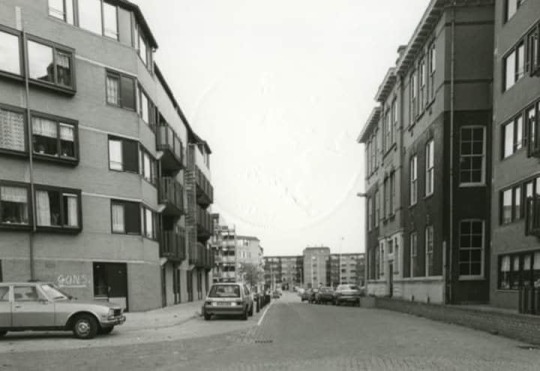
De fontein aan het Hofplein, met op de achtergrond het stadhuis, in 1955.
Het Hofplein is een (verkeers-)plein in Rotterdam. Het plein is gelegen op de kruising van het Weena, de Schiekade en de Coolsingel.
Het Hofplein werd aangelegd op de plaats van de vroegere Hofpoort en lag oorspronkelijk iets meer naar het noordoosten. Na het Bombardement op Rotterdam in 1940 is het plein echter op een nieuwe plaats aangelegd, om beter aan te sluiten bij het stratenpatroon. Hierdoor is wel het station Rotterdam Hofplein verder van het plein komen te liggen. Aan het Hofplein stond tot 1939 de Delftsche Poort.
Het is een verkeersplein uitgevoerd als een rotonde met verkeerslichten. In het midden van het plein bevindt zich een grote fontein. Het beeldhouwwerk van de fontein is van Cor van Kralingen.
In het gras rond de fontein liggen de sporen van de Rotterdamse tram. Er is intensief tramverkeer over het plein (bijna alle tramlijnen rijden via het Hofplein), waardoor de wachttijden voor het autoverkeer bij de lichten kunnen oplopen tot meerdere minuten. De trams kunnen zowel rechts- als linksom over het plein rijden, waardoor het mogelijk is rechtstreeks linksaf te slaan.
De fotograaf is Johan van Bueren en de foto komt uit het Stadsarchief Rotterdam. De informatie komt van Wikipedia.
Bron, Rotterdam van Toen, Stads Archief Rotterdam

Rie Mastenbroek (1919-2003), olympisch zwemster
In 1934 won Mastenbroek drie gouden en één zilveren medaille bij de Europese kampioenschappen langebaan (50 meter) in Maagdenburg (Duitsland). Ze herhaalde deze prestatie bij de Olympische Spelen van 1936 in Berlijn. Ze won, als zeventienjarige, de 100 meter vrije slag, de 400 meter vrije slag en (samen met Willy den Ouden, Tini Wagner en Jopie Selbach) de 4x100 meter vrije slag. Op de 100 meter rugslag behaalde ze de zilveren medaille. Het was voor het eerst in de geschiedenis dat een zwemster zoveel (gouden) olympische medailles won, en Mastenbroek was dan ook de ongekroonde keizerin van de Spelen.
Rie Mastenbroek stierf op 6 november 2003 in haar woonplaats Rotterdam.
Bron, Stadsarchief Rotterdam.

Gezicht op de Nieuwehaven met de Pakkenbrug in 1938.
In 1412 verleende graaf Willem VI aan Rotterdam vergunning tot een stadsuitbreiding in zuidelijke richting. Er werd een nieuwe stadsvest gegraven, waarvan melding wordt gemaakt in de stadsrekening van 1426/27. Door de uitbreiding van de stad aan de zuid-oostzijde, in het laatste kwartaal van de 16de eeuw, is deze vest als zodanig vervallen. Ze werd tot haven ingericht, terwijl ten zuiden daarvan een nieuwe vest werd gegraven. Daarna sprak men nog wel over de Oude Vest. De naam Nieuwehaven dankte ze aan de reeds bestaande Oudehaven. Oorspronkelijk liep ze dood tegen de werven van de Admiraliteit, doch ze was door een dwarshaven verbonden met het Haringvliet. In 1689 is de Nieuwehaven doorgegraven en de dwarshaven gedempt. Bij het bombardement in mei 1940 werd de bebouwing langs de haven verwoest. De haven zelf bleef jarenlang in een kale omgeving liggen. In de eerste helft van de jaren zestig van deze eeuw werd ze gedempt. De huidige Nieuwehaven is een straat die even ten zuiden van de vroegere haven van die naam ligt.
De Pakkenbrug was een brug over de Nieuwehaven tegenover de Oostmolenstraat. Ze was vernoemd naar kapitein Adriaen Cornelisz. Pack, die omstreeks 1589 aan de Nieuwehaven woonde. Volgens de kroniekschrijver Jan Gerritsz. van Waerschut was de brug in 1593 gemaakt. Ze kwam ook onder de namen Gerrit Cocksbrug en Molenbrug voor. Gerrit de Wigger woonde voor 1485 in een 'groot' huis aan de Rijstuin met een steeg aan de oostzijde daarvan. Voordat de vest tot Nieuwehaven was vergraven, zal deze woning wel in de buurt van de latere Pakkenbrug hebben gelegen. De steeg was waarschijnlijk de Oostmolenstraat en Gerrit misschien de molenaar van de molen, die daar op de verst heeft gestaan. Gerrit Wiggertz. Cock, die in de eerste helft van de 16de eeuw voorkwam, kan een nakomeling zijn geweest. De naam Molenbrug zal ontleend zijn aan de molen, die in 1584 werd afgebroken ten behoeve van de bouw van de brug. Tijdens de demping van de Nieuwe Haven werd de brug gesloopt. Bij besluit B&W 28 mei 1957 werd de naam ingetrokken.
De fotograaf is Jan Retel en de foto en informatie komen uit het Stadsarchief Rotterdam.
Bron, Rotterdam van Toen, Stads Archief Rotterdam

De ingang van het slachthuis aan de Boezemstraat, februari-april 1978.
In 1897 bouwde men aan de Crooswijkse Boezemstraat het Rotterdams Openbaar Slachthuis. In de volksmond stond het al gauw bekend als het 'abattoir'. Het lag dicht in de buurt van de veemarkt. In de loop van de jaren is herhaaldelijk gepoogd het slachthuis naar een ander deel van Rotterdam te verplaatsen. Tot 1981 bleef het echter op de oude plaats in gebruik. In dat jaar verhuisde men naar een nieuw slachthuis in de Spaansepolder. Het oude complex in Crooswijk werd kort daarop gesloopt.
De Boezemstraat is vernoemd naar de hoge boezem. Op 14 januari 1769 werd door de Staten van Holland en West-Friesland octrooi verleend om, tot ontlasting van de gemeene boezem de Rotte, een tweede boezem te maken in de polder Rubroek. Het overtollige water kon door een sluis bij de Oostpoort ontlast worden in de Nieuwe Maas. De aanbesteding van de hoge en de lage boezem en de watermolens vond plaats op 25 april 1772. In 1854 werd nog een Reserveboezem gegraven. N 1897 werden de Hoge en Lage Boezem gedeeltelijk en de Reserveboezem geheel gedempt. De 2de Reserveboezemstraat heette van 1914 tot 1918 Kampioenstraat, een naam die herinnerde aan het door de voetbalvereniging 'Sparta' behaalde kampioenschap. Deze vereniging oefende op het nabijgelegen Exercitieveld. De Boezemweg vormde vóór 1973 een onderdeel van de Boezemsingel. Hoewel de naam Hoge Boezem als straatnaam reeds jarenlang in gebruik is, werd hij pas bij bovengenoemd besluit officieel vastgesteld. Op een plattegrond van 1881 komt de Boezemstraat voor onder de naam Abattoirstraat naar het slachthuis of abattoir, dat daar geprojecteerd was. Dit abattoir werd op 1 mei 1883 geopend.
De fotograaf is Ary Groeneveld en de foto komt uit het Stadsarchief Rotterdam. De informatie komt eveneens uit het Stadsarchief Rotterdam.
Bron, Rotterdam van Toen, Stads Archief Rotterdam

De Feijenoordstraat op het Noordereiland, met rechts te slopen huizen, 1966. Op de achtergrond Het Witte Huis.
De Feijenoordstraat is een straat op het Noordereiland. Het oude eiland Feijenoord, dat gevormd werd door de Nieuwe Maas en het Zwanegat, komt reeds in 1441 voor. In 1591 werd het voor tweederde en in 1658 voor het resterende deel door de stad Rotterdam gekocht. Het eiland behoorde tot het grondgebied van IJsselmonde. In 1869 werd Feijenoord met Rotterdam verenigd. De aanleg van de spoorweg over dit terrein en het graven van een groot aantal havens hebben dit stadsgedeelte tot grote ontwikkeling gebracht. Door het graven van de Noorderhaven in de kop van Feijenoord in 1874 ontstond het Noordereiland.
In de oudste bronnen is de naam Fijenoord; later wordt het eiland gewoonlijk aangeduid als 'de Noord' (vermoedelijk een verbastering van 'Oord'). Feije komt meermalen voor als meisjesnaam. Een verband tussen een zekere Feije en Feijenoord is echter niet gevonden. Ook gedacht kan worden aan de Friese jongensnaam Feije. Dirck van der Does, in 1466 baljuw van Zuid- Holland, had een broer Feije, die mogelijk met Feijenoord in verband kan worden gebracht. De benaming 'oord' komt in deze streken veelvuldig voor en heeft de betekenis van buitendijks land, uiterdijk, gors, schor of slik. Van 1902 tot 1958 was er ook een Korte Feijenoorddijk. Deze vormt thans een onderdeel van de Oranjeboomstraat en de Persoonshaven.
De fotograaf is Lex de Herder en de foto komt uit het Stadsarchief Rotterdam. De informatie komt eveneens uit het Stadsarchief Rotterdam.
Bron, Rotterdam van Toen, Stads Archief Rotterdam

De Crooswijkseweg gezien vanuit het noorden, 1930.
Omstreeks 1337 komt de heer Van Voorne voor als eigenaar van het huis of de hofstede te Crooswijk. Dit huis kwam later aan de graaf van Holland. Het stond waarschijnlijk op de plaats van het oude Duifhuis, een toltoren die door de Romeinen was gesticht. Het huis komt voor op een kaart van 1567 van Jan Potter. In 1828 kocht de stad de buitenplaats 'het Huis te Crooswijk', ook bekend onder de naam van Duifhuis, met de daarbij behorende grond. Het huis werd gesloopt en op het terrein werd een begraafplaats aangelegd. Alle hierboven genoemde straten liggen in het voormalige ambacht Crooswijk. De Crooswijkseweg wordt reeds in 1489 genoemd. Deze liep van de huidige Goudse Rijweg naar de vroegere Oudedijk. Ze kwam ook voor onder de namen Crooswijksche Binnenweg, Goudscheweg, Rubroekscheweg, Oudelandscheweg, Schinkelweg en Gerrit Berchmansweg. De Crooswijksebocht werd voor 1948 alleen aangeduid met de naam Crooswijk.
De prentbriefkaart komt uit het Stadsarchief Rotterdam. De informatie komt eveneens uit het Stadsarchief Rotterdam.
Bron, Rotterdam van Toen, Stads Archief Rotterdam
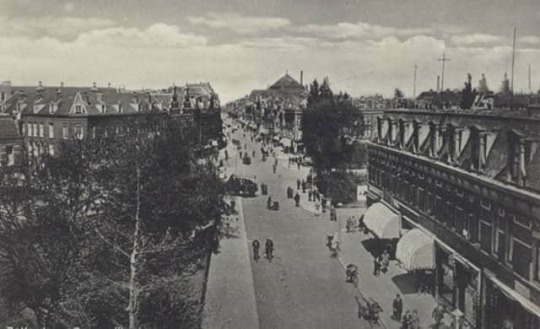
0 notes
Photo

In Game:
Benjamin Franklin was one of the Founding Fathers of the United States, and a noted polymath; Franklin was a leading author, printer, political theorist, politician, postmaster, scientist, musician, inventor, satirist, civic activist, statesman, and diplomat.
During the French and Indian War, Benjamin Franklin was tasked by the Templar William Johnson to study the Precursor Box and the Manuscript, while remaining unaware of Johnson's actual allegiance. However, the Assassin Shay Cormac intervened took possession of the box and the manuscript. He and fellow Assassin Hope Jensen then traveled to Sleepy Hollow, where they manipulated Franklin into assisting the Assassins in their search for the whereabouts of a Piece of Eden.
Franklin, believing the two Assassins were Johnson's affiliates, agreed and was successful in locating the artifact, by electrifying the box with lightning. Hope then helped Franklin evade the local militia, who had been alerted to the fact that Shay had stolen confiscated lightning rods from them.
Afterwards, Franklin was staying in Boston when copies of his first almanac were stolen. Haytham Kenway noticed his distress and offered a lending hand. Franklin expressed surprise, as those living in the colonial city usually refused to be of any help, and correctly assumed that he was new to Boston.
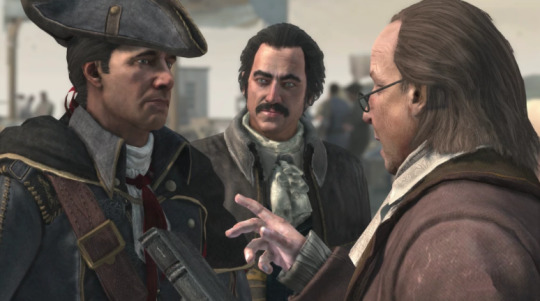
Franklin then requested that Haytham assist him with the task of finding stolen pages of his Almanac. Later on, Haytham met Franklin at the local general store, where he was writing a treatise on the benefits of having an older woman as a lover, much to Haytham's amusement.
They met again another time, where Franklin explained the isolation he felt after the Albany Conference, as friends sought to distance themselves from his cartoon. He thanked Haytham for speaking with him and began expressing his belief that the Thirteen Colonies should be independent of the British Crown, which greatly intrigued Haytham.
Franklin continued to work with Hope, and by 1756, had begun producing chemical weapons, grenades, poisonous gases, and more, which unbeknownst to him, was to be used against colonials who supported the British crown, and the authorities of New York. However, Shay Cormac, who had become a Templar ally, was able to trick Franklin into giving him a prototype grenade launcher and afterward destroyed the poison reserves.
By the American Revolution, Franklin had become a Founding Father. Franklin contributed to the writing of the Declaration of Independence, which was primarily drafted by Thomas Jefferson. On 4 July 1776, Franklin was present alongside Samuel Adams, John Hancock, and Adams' ally Ratonhnhaké:ton, where he signed the Declaration right after Hancock.
For the rest of the American Revolutionary War, Franklin lived in Paris as America's ambassador to France from 1776 to 1785. In 1776, he was hunted by local criminals, before being saved by Shay. Franklin informed Shay about his invitation to the Palace of Versailles, to which Shay requested a favor in return - to gain entry to the palace for him as well. Franklin agreed, and was able to get Shay inside.
At some point during his time in France, Franklin also interacted with the French Assassin Arno Dorian during his childhood and became acquainted with the French Mentor Mirabeau.
In Real Life:
Benjamin Franklin was born on January 17th, 1706, in colonial Boston. His father, Josiah Franklin (1657-1745), a native of England, was a candle and soap maker who married twice and had 17 children. Franklin’s mother was Abiah Folger (1667-1752) of Nantucket, Massachusetts, Josiah’s second wife. Franklin was the eighth of Abiah and Josiah’s 10 offspring.
Franklin’s formal education was limited and ended when he was 10; however, he was an avid reader and taught himself to become a skilled writer. In 1718, at age 12, he was apprenticed to his older brother James, a Boston printer. By age 16, Franklin was contributing essays (under the pseudonym Silence Dogood) to a newspaper published by his brother. At age 17, Franklin ran away from his apprenticeship to Philadelphia, where he found work as a printer. In late 1724, he traveled to London, England, and again found employment in the printing business.
Benjamin Franklin returned to Philadelphia in 1726, and two years later opened a printing shop. The business became highly successful producing a range of materials, including government pamphlets, books and currency. In 1729, Franklin became the owner and publisher of a colonial newspaper, the Pennsylvania Gazette, which proved popular–and to which he contributed much of the content, often using pseudonyms. Franklin achieved fame and further financial success with “Poor Richard’s Almanack,” which he published every year from 1733 to 1758.
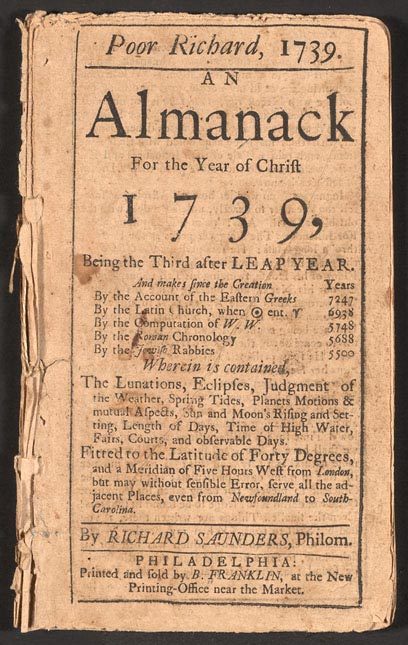
(Image source)
In 1730, Franklin began living with Deborah Read (c. 1705-74), the daughter of his former Philadelphia landlady, as his common-law wife. Read’s first husband had abandoned her; however, due to bigamy laws, she and Franklin could not have an official wedding ceremony. Franklin and Read had a son, Francis (1732-36), who died of smallpox at age 4, and a daughter, Sarah (1743-1808). Franklin had another son, William (c. 1730-1813), who was born out of wedlock.
As Franklin’s printing business prospered, he became increasingly involved in civic affairs. Starting in the 1730s, he helped establish a number of community organizations in Philadelphia, including a lending library (it was founded in 1731, a time when books weren’t widely available in the colonies, and remained the largest U.S. public library until the 1850s), the city’s first fire company, a police patrol and the American Philosophical Society, a group devoted to the sciences and other scholarly pursuits. Franklin also organized the Pennsylvania militia, raised funds to build a city hospital and spearheaded a program to pave and light city streets. Additionally, Franklin was instrumental in the creation of the Academy of Philadelphia, a college which opened in 1751 and became known as the University of Pennsylvania in 1791.
In 1748, Franklin, then 42 years old, had expanded his printing business throughout the colonies and become successful enough to stop working. Retirement allowed him to concentrate on public service and also pursue more fully his longtime interest in science. In the 1740s, he conducted experiments that contributed to the understanding of electricity and invented the lightning rod, which protected buildings from fires caused by lightning. In 1752, he conducted his famous kite experiment and demonstrated that lightning is electricity. Franklin also coined a number of electricity-related terms, including battery, charge, and conductor.
Politics became more of an active interest for Franklin in the 1750s. In 1757, he went to England to represent Pennsylvania in its fight with the descendants of the Penn family over who should represent the Colony. He remained in England to 1775, as a Colonial representative not only of Pennsylvania, but of Georgia, New Jersey and Massachusetts as well.
Early in his time abroad, Franklin considered himself a loyal Englishman. England had many of the amenities that America lacked. The country also had fine thinkers, theater, witty conversation — things in short supply in America. He kept asking Deborah to come visit him in England. He had thoughts of staying there permanently, but she was afraid of traveling by ship.

(Image source)
In 1765, Franklin was caught by surprise by America's overwhelming opposition to the Stamp Act. His testimony before Parliament helped persuade the members to repeal the law. He started wondering if America should break free of England. Franklin, though he had many friends in England, was growing sick of the corruption he saw all around him in politics and royal circles. Franklin, who had proposed a plan for united colonies in 1754, now would earnestly start working toward that goal.
Franklin returned to Philadelphia in May 1775, shortly after the Revolutionary War (1775-83) had begun, and was selected to serve as a delegate to the Second Continental Congress, America’s governing body at the time. In 1776, he was part of the five-member committee that helped draft the Declaration of Independence, in which the 13 American colonies declared their freedom from British rule. That same year, Congress sent Franklin to France to enlist that nation’s help with the Revolutionary War. In February 1778, the French signed a military alliance with America and went on to provide soldiers, supplies and money that proved critical to America’s victory in the war.
As minister to France starting in 1778, Franklin helped negotiate and draft the 1783 Treaty of Paris that ended the Revolutionary War. Benjamin Franklin is the only founding father to have signed all four of the key documents establishing the U.S.: the Declaration of Independence (1776), the Treaty of Alliance with France (1778), the Treaty of Paris establishing peace with Great Britain (1783) and the U.S. Constitution (1787).
In 1785, Franklin left France and returned once again to Philadelphia. In 1787, he was a Pennsylvania delegate to the Constitutional Convention. (The 81-year-old Franklin was the convention’s oldest delegate.) At the end of the convention, in September 1787, he urged his fellow delegates to support the heavily debated new document. The U.S. Constitution was ratified by the required nine states in June 1788, and George Washington (1732-99) was inaugurated as America’s first president in April 1789.
Franklin died a year later, at age 84, on April 17th, 1790, in Philadelphia. Following a funeral that was attended by an estimated 20,000 people, he was buried in Philadelphia’s Christ Church cemetery. In his will, he left money to Boston and Philadelphia, which was later used to establish a trade school and a science museum and fund scholarships and other community projects.
More than 200 years after his death, Franklin remains one of the most celebrated figures in U.S. history. His image appears on the $100 bill, and towns, schools, and businesses across America are named for him.
Sources:
https://www.biography.com/people/benjamin-franklin-9301234
http://www.history.com/topics/american-revolution/benjamin-franklin
http://www.ushistory.org/franklin/info/
https://www.britannica.com/biography/Benjamin-Franklin
11 notes
·
View notes
Photo

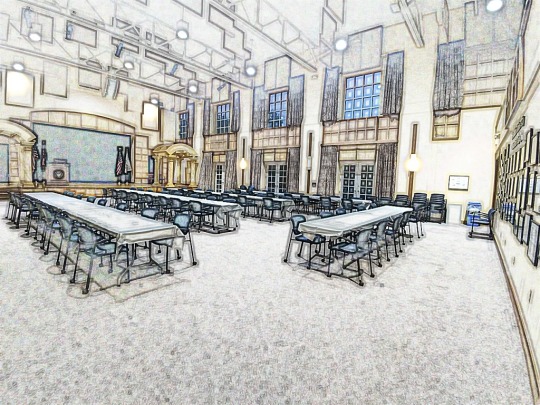








Networking in the Capital City - January & February 2020
It’s a New Year! It’s a New Decade. It is time to rise and shine, and network.
January 2020
January 7
- Bexley Women in Networking with Dress for Success (6PM; Piccadilly: 2501 E. Main St., Bexley; http://www.bexleyareachamber.org) (Bus - # 2)
- Connected Dublin (6PM; The Dublin Entrepreneurial Center: 565 Metro Place South, Dublin; http://www.connectednetworkinggroup.com) (Bus - # 33 to Dublin Metro)
January 8
- New Year Networking Party (6PM; Star Lanes: 8655 Lyra Drive, Polaris; http://www.cypclub.com) (Bus - # 102)
January 10
- CYP Cares Coffee With a Cause (7:30AM; M+A Architects: 775 Yard St., Suite 325, Grandview Heights; http://www.cypclub.com) (Bus - # 3, 13, 22 or 31)
January 15
- Bexley Chamber Luncheon (12:30PM; JPS Print/Creative Space: 1014 Parsons Ave., South Side; http://www.bexleyareachamber.org) (Bus - # 8 Parsons or 4)
- Arch City Engagements (5PM; Throw Nation: 6649 Dublin Center Drive, Dublin; http://www.facebook.com/archcityengagements) (Bus - # 33)
- Connected Worthington (6PM; CoHatch “The Library”: 752 High Street, Worthington; http://www.connectednetworkinggroup.com) (Bus - # 102)
January 16
- Gahanna Annual Meeting (11:30AM; LaNavona: 154 N. Hamilton Rd., Gahanna; http://www.gahannaareachamber.com) (Bus - # 24)
January 17
- Creative Mornings Columbus: Roots (8:30AM; Root Insurance: 80 E. Rich St., Downtown Columbus; https://creativemornings.com/cities/clb) (Closest Bus - Multiple Routes)
January 21
- CYP Coffee Talk: Networking in the New Year (7:30AM; Crimson Cup Innovation Lab: 700 Alum Creek Drive, Near East Side; http://www.cypclub.com) (Closest Bus - # 2 or 11)
- #LinkedInLocal - Networking Extravaganza: New Year, New Opportunities (5PM; CoHatch “The Pub”: 1554 Polaris Parkway, Polaris; http://www.connectednetworkinggroup.com) (Bus - # 102)
- Job Transition Group (6:30PM; Improving: One Easton Oval, Suite 175, Northeast Columbus; http://www.amacolumbus.org) (Bus - # 7 to Easton, 23 or 32)
January 24
- Breakfast with Columbus Business First (7AM; Urban Air Trampoline Park: 6314 E. Livingston Ave., Reynoldsburg; http://www.columbusbusinessfirst.com) (Bus - # 1 or 25)
January 27
- Upper Arlington State of the City (5PM; Municipal Services Building: 3600 Tremont Rd., Upper Arlington; http://www.upperarlingtonoh.gov) (Bus - # 1 Kenny/Livingston)
January 28
- Dublin Economic Forecast Breakfast (7:30AM; Dublin Methodist Hospital: 7500 Hospital Drive, Dublin; http://www.dublinchamber.org)
January 29
- Tri-Village Chamber Networking (6PM; Grandview Theater: 1247 Grandview Ave., Grandview Heights; http://www.chamberpartnership.org) (Bus - # 31)
January 30
- Columbus Web Group (6PM; WeWork: 800 N. High St., Short North; https://www.meetup.com/Columbus-Web-Group) (Bus - # 1, 2, 5, or CBUS)
- CYP Member Mixer (6PM; Industrious The Sutton: 875 N. High St., Short North; http://www.cypclub.com) (Bus - # 1, 2, 5, or CBUS)
January 31
- Coffee, Cocktails, and Consociating (7:30PM; Shadowbox Live: 503 S. Front St., Brewery District; http://www.theatre-roundtable.org) (Bus - CBUS)
February 2020
February 4
- Dublin YP Coffee and Connections (9AM; Barry’s Bagels: 5760 Frantz Rd., Dublin; http://www.dublinchamber.org) (Bus - # 21)
- Connected Dublin (6PM; The Dublin Entrepreneurial Center: 565 Metro Place South, Dublin; http://www.connectednetworkinggroup.com) (Bus - # 33 to Dublin Metro)
February 6
- Arch City Engagements (5PM; The Golf Club of Dublin: 5805 Eiterman Drive, Dublin; http://www.facebook.com/archcityengagements)
- Co-Working Spaces (6PM; Bexley Public Library: 2411 E. Main St., Bexley; http://www.bexleyareachamber.org & http://www.bexleylibrary.org) (Bus - # 2)
- Connected Upper Arlington (6PM; CoHatch “The Overlook”: 1733 W. Lane Ave., Upper Arlington; http://www.connectednetworkinggroup.com) (Bus - # 3)
February 7
- CYP Cares Coffee With a Cause: Poverty & Homelessness (7:30AM; M+A Architects: 775 Yard St., Suite 325, Grandview Heights; http://www.cypclub.com) (Bus - # 3, 13, 22 or 31)
February 8
- Small Business Bootcamp (9:30AM; St. John Learning Center - Campion Hall; 640 S. Ohio Ave., Old Oaks; http://stjohnlearning.wordpress.com) (Bus - # 1 or 22)
- Volunteer UA Expo (10AM; Upper Arlington Main Library: 2800 Tremont Rd., Upper Arlington; http://www.ualibrary.org)
- Free Press Second Saturday Salon (6:30PM; The Columbus Free Press: 1021 E. Broad St., Olde Towne East; http://www.columbusfreepress.com) (Bus - # 10)
February 10
- State of the Community: Bexley (6PM; Columbus School for Girls - Shedd Theater: 56 S. Columbia Ave., Bexley; http://www.bexley.org) (Bus - # 10)
February 12
- Westerville YP Breakfast with a Leader: Joe DeLoss (7:30AM; Renaissance Columbus - Westerville Hotel: 409 Altair Parkway, Westerville; http://www.westervillechamber.com) (Bus - CMAX to Polaris/Africa or # 102)
- Dublin Women in Business - “Life Organizing 101″ (11:30AM; The Club at Tartan Fields: 8070 Tartan Fields Drive, Dublin; http://www.dublinchamber.org)
- CYP Club Speed Networking (5:30PM; Serendipity Labs: 886 N. High St., 4th Floor, Short North; http://www.cypclub.com) (Bus - # 1, 2, 5, or CBUS)
- Diversity Columbus (6PM; Two Truths: 1203 N. High St., Short North; http://www.diversitycolumbus.org) (Bus - # 1, 2, or 102)
February 13
- State of the City: Columbus (5:30PM; Columbus West High School: 179 S. Powell Ave., Westgate; http://www.columbus.gov) (Bus - # 10)
- Westerville Business After Hours (5:30PM; Capital Axe Throwing: 6124 Busch Boulevard, Northland; http://www.westervillechamber.com) (Bus - # 4, 8, or 35)
February 18
- CYP Coffee Talk: For the Love of Coffee! (7:30AM; Crimson Cup Innovation Lab: 700 Alum Creek Drive, Near East Side; http://www.cypclub.com) (Closest Bus - # 2 or 11)
- Connected Polaris (6PM; CoHatch “The Pub”: 1554 Polaris Parkway, Polaris; http://www.connectednetworkinggroup.com) (Bus - # 102)
February 19
- Bexley Networking Luncheon (Noon; Freshii: 2510 E. Main St., Bexley; http://www.bexleyareachamber.org) (Bus - # 2)
- Tri-Village Women’s Networking (5:30PM; The Old Spot: 1097 W. 1st Ave., Grandview Heights; http://chamberpartnership.org) (Bus - # 31)
- Connected Worthington (6PM; CoHatch: 752 High Street, Worthington; http://www.connectednetworkinggroup.com) (Bus - # 102)
February 20
- Gahanna Women in Business (7:30AM; Mount Carmel East - Siegel Center, Building 3: 5975 E. Broad St., Far East Side; http://www.gahannaareachamber.com) (Bus - # 10 or 25)
- Hilliard/Dublin/Westerville Business Expo (4:30PM; Scene 75: 5033 Tuttle Crossing Blvd., Dublin; http://www.dublinchamber.org, http://www.hilliardchamber.org, or http://www.westervillechamber.com) (Bus - # 21)
- Connected Delaware (6PM; CoHatch “The Newsstand”: 18 E. William St., Delaware; http://www.connectednetworkinggroup.com)
February 21
- Breakfast with Business First/Creative Mornings at the Museum Doubleheader (see below)
- Breakfast with Columbus Business First (7AM; Columbus Museum of Art - Upstairs: 480 E. Broad St., Discovery District; http://www.columbusbusinessfirst.com) (Bus - # 10)
- Creative Mornings: Instinct (8:30AM; Columbus Museum of Art - Downstairs: 480 E. Broad St., Discovery District; http://www.creativemornings.com/cities/clb) (Bus - # 10)
February 25
- Bexley Business Breakfast: Social Media Networking Strategies (8AM; Market District Kitchen & Bar: 2250 E. Main St., Bexley; http://www.bexleyareachamber.org) (Bus - # 2)
February 27
- Network Dublin! Business Breakfast (7:30AM; The Rail: 5839 Frantz Rd., Dublin; http://www.dublinchamber.org) (Bus - # 21)
- Columbus Web Group (6PM; WeWork: 800 N. High St., Short North; https://www.meetup.com/Columbus-Web-Group) (Bus - # 1, 2, 5, or CBUS)
March 3
- Connected Dublin (6PM; The Dublin Entrepreneurial Center: 565 Metro Place South, Dublin; http://www.connectednetworkinggroup.com) (Bus - # 33 to Dublin Metro)
0 notes